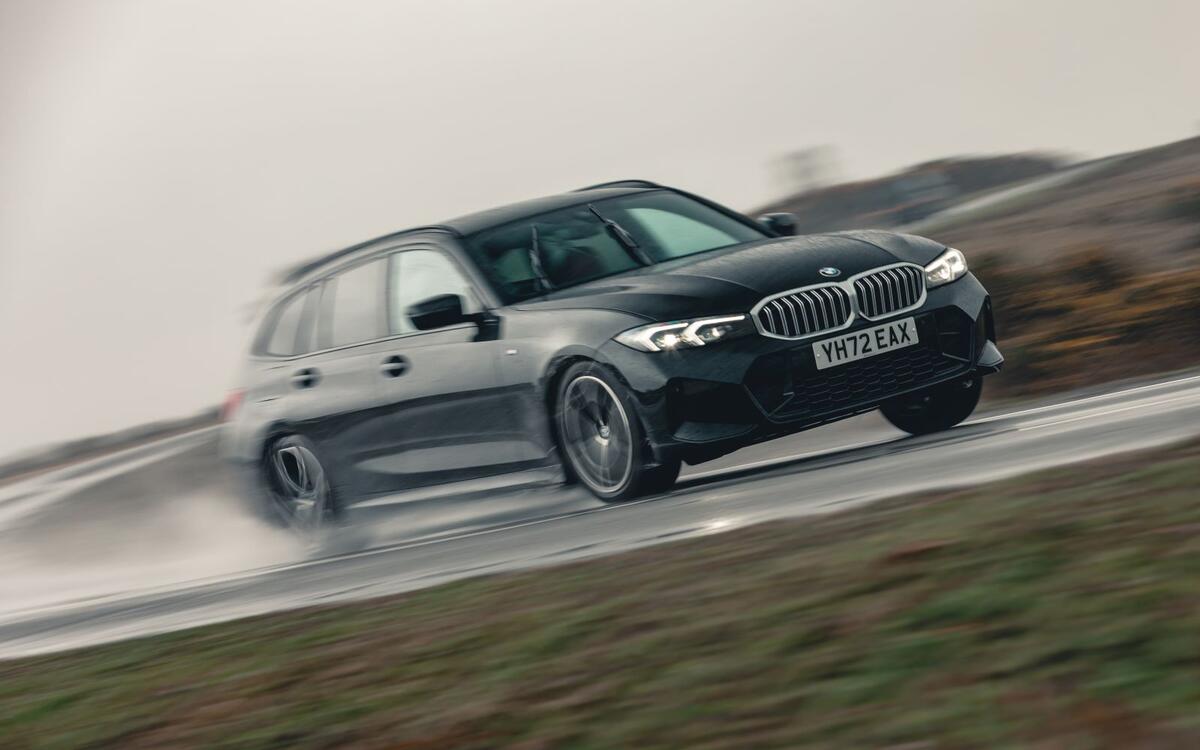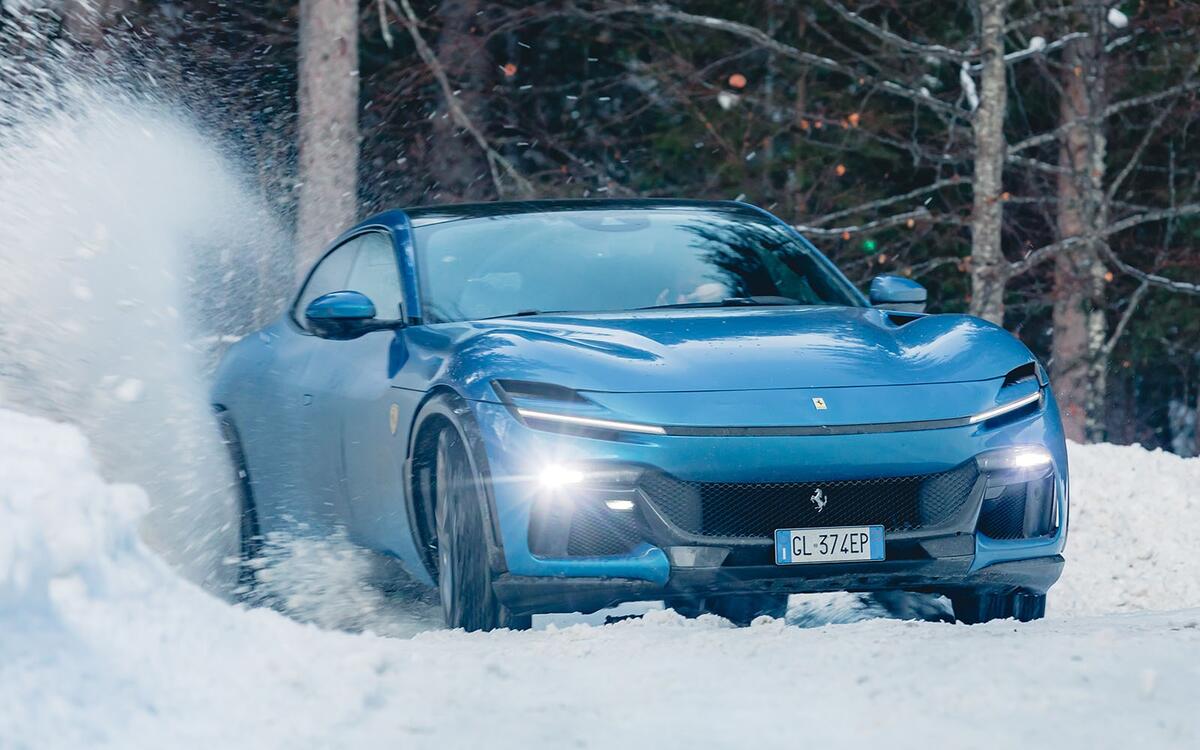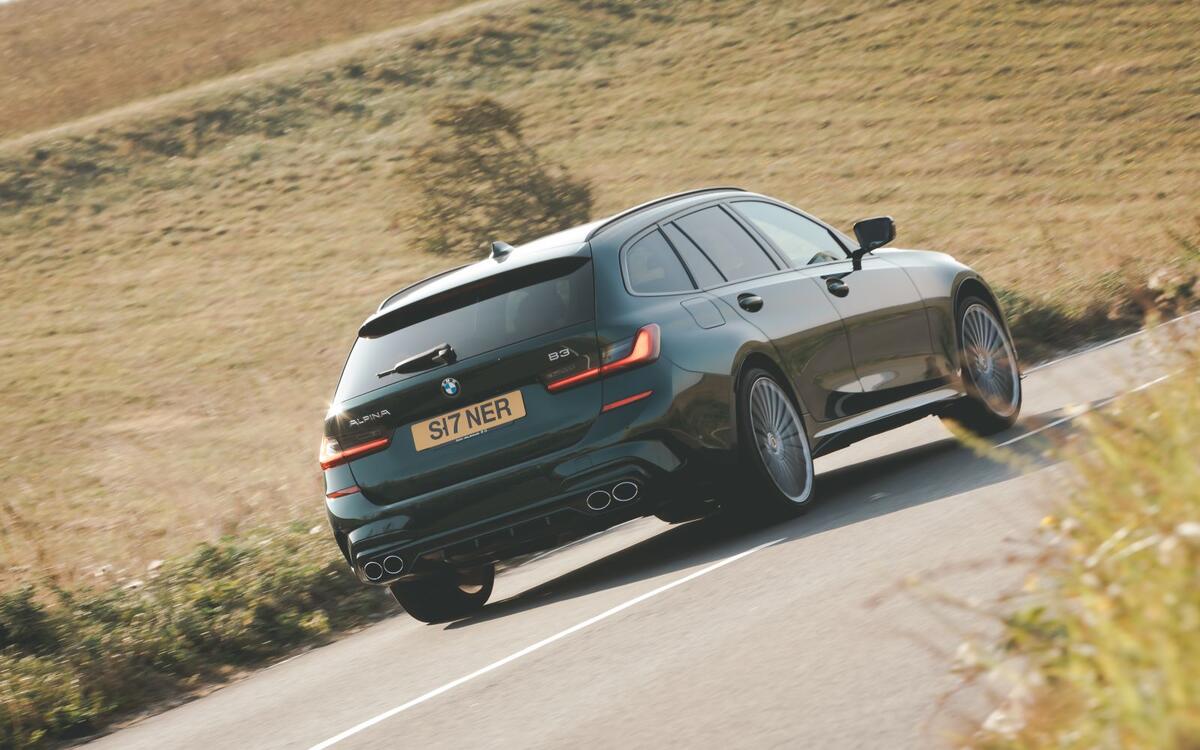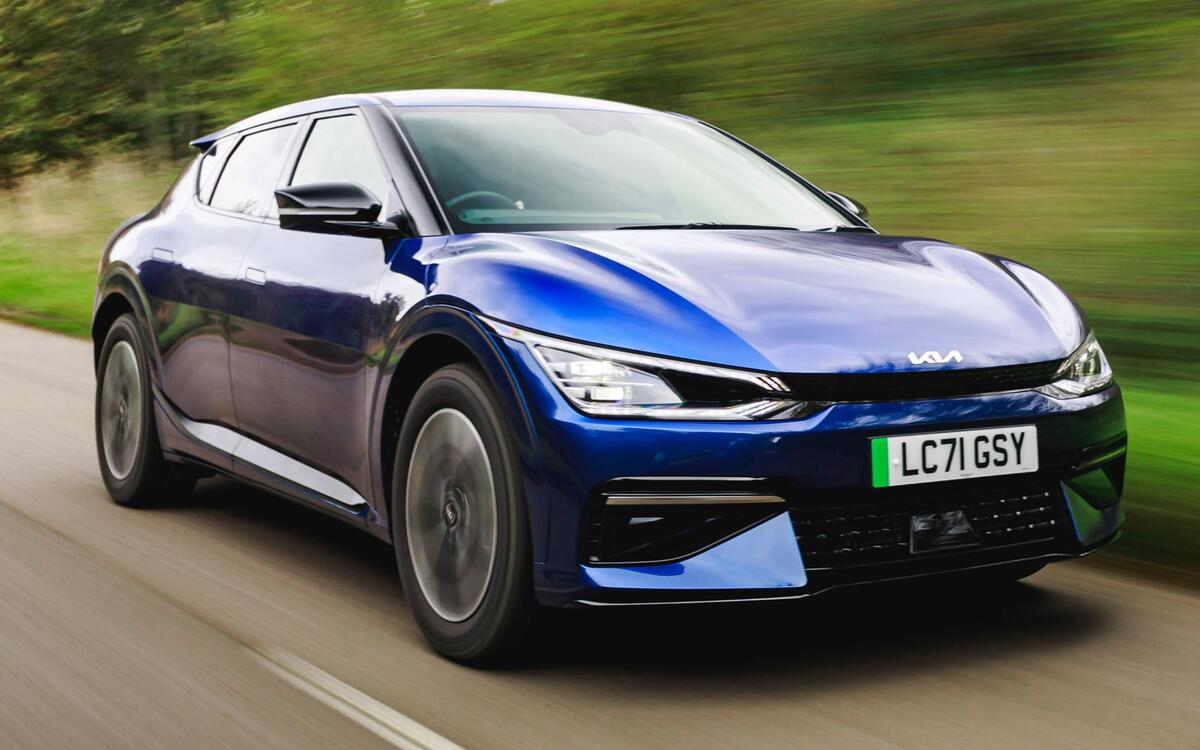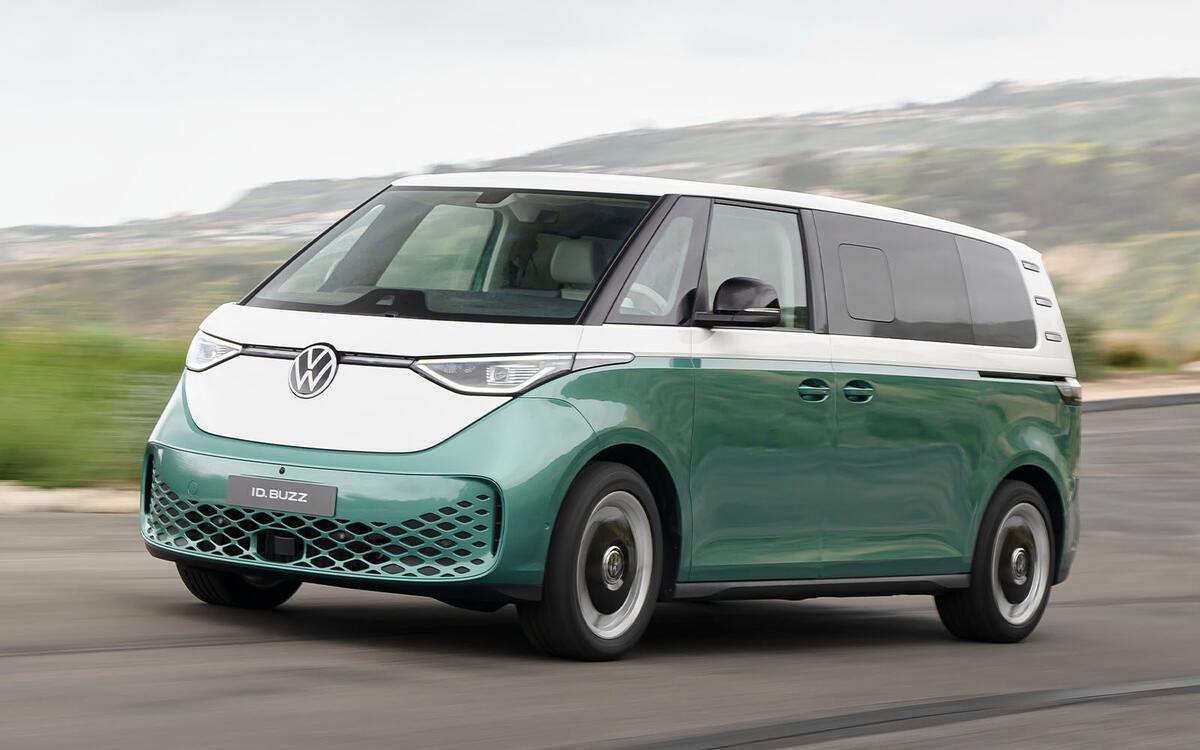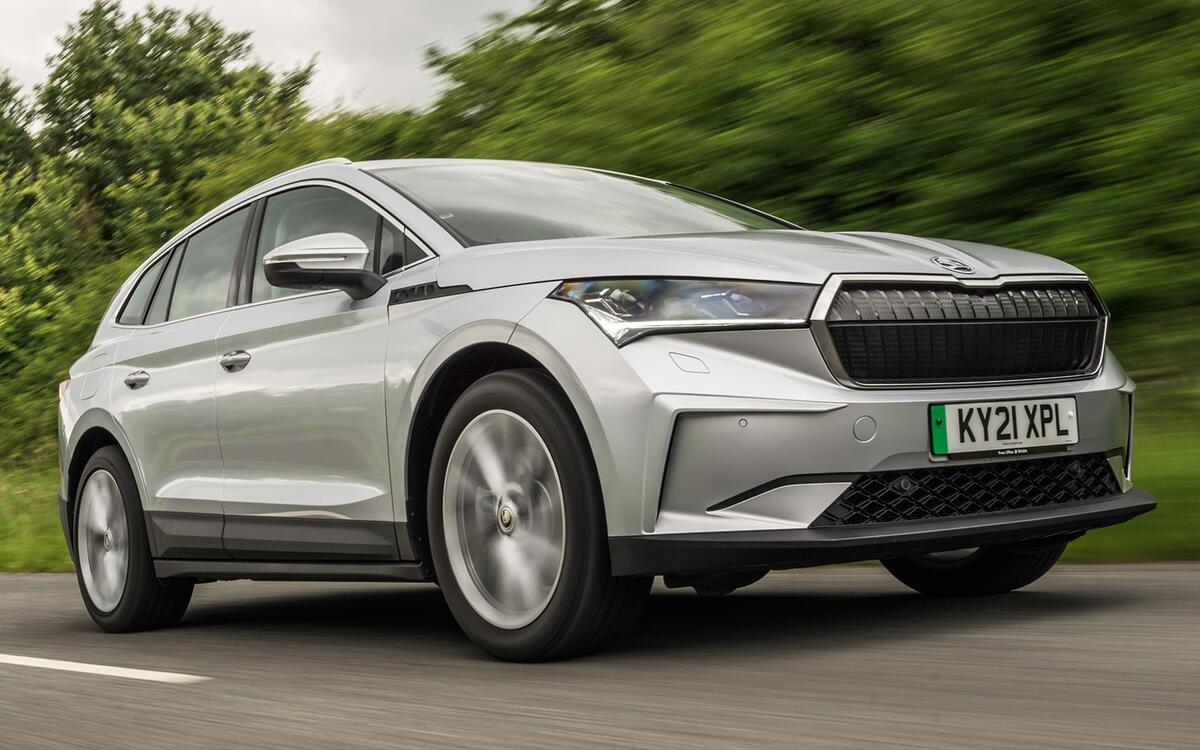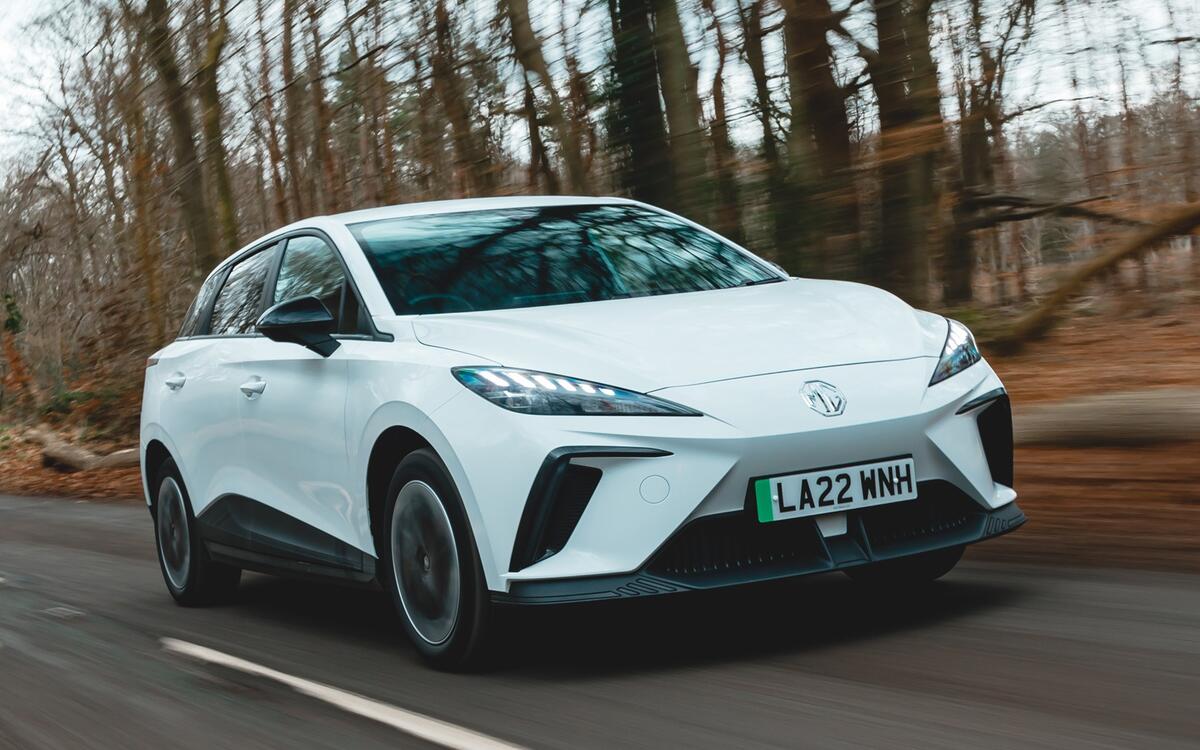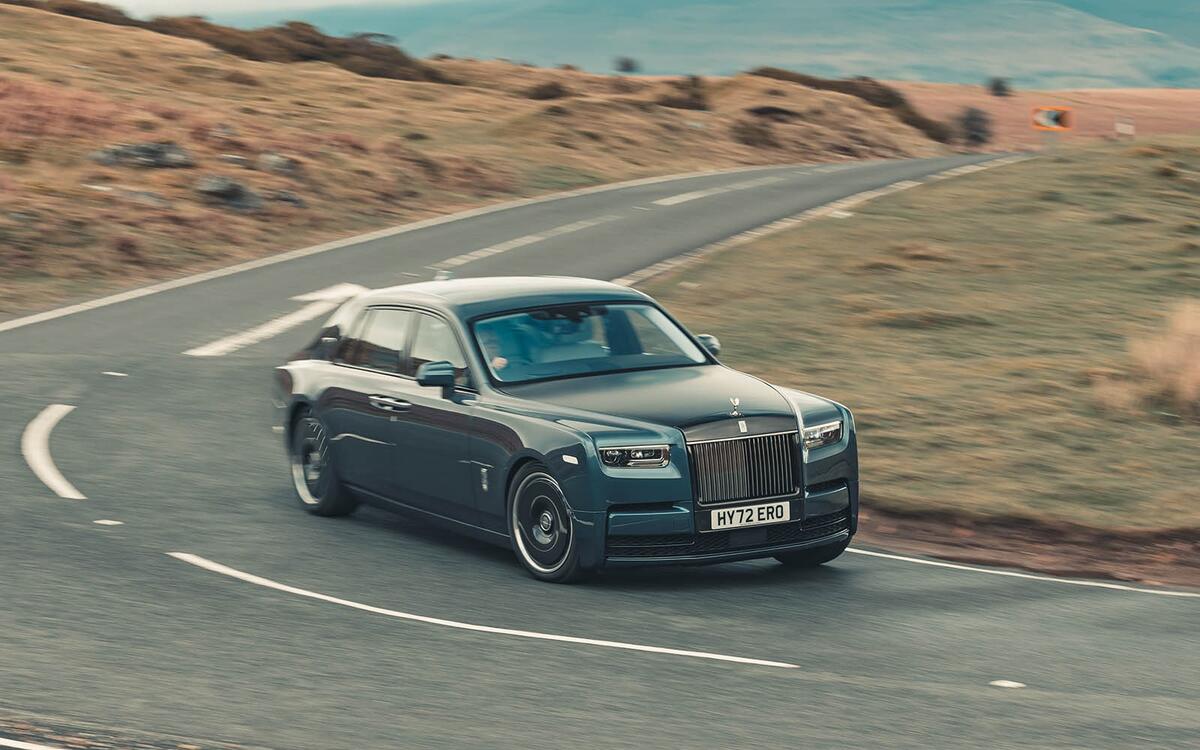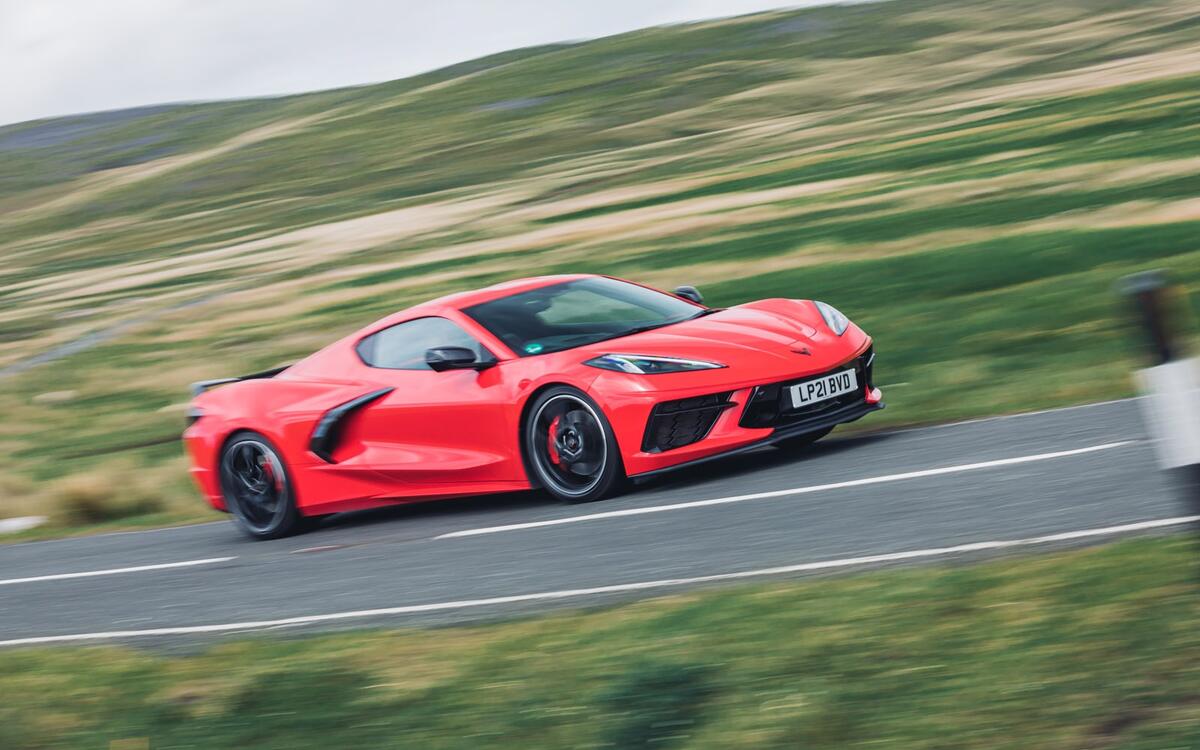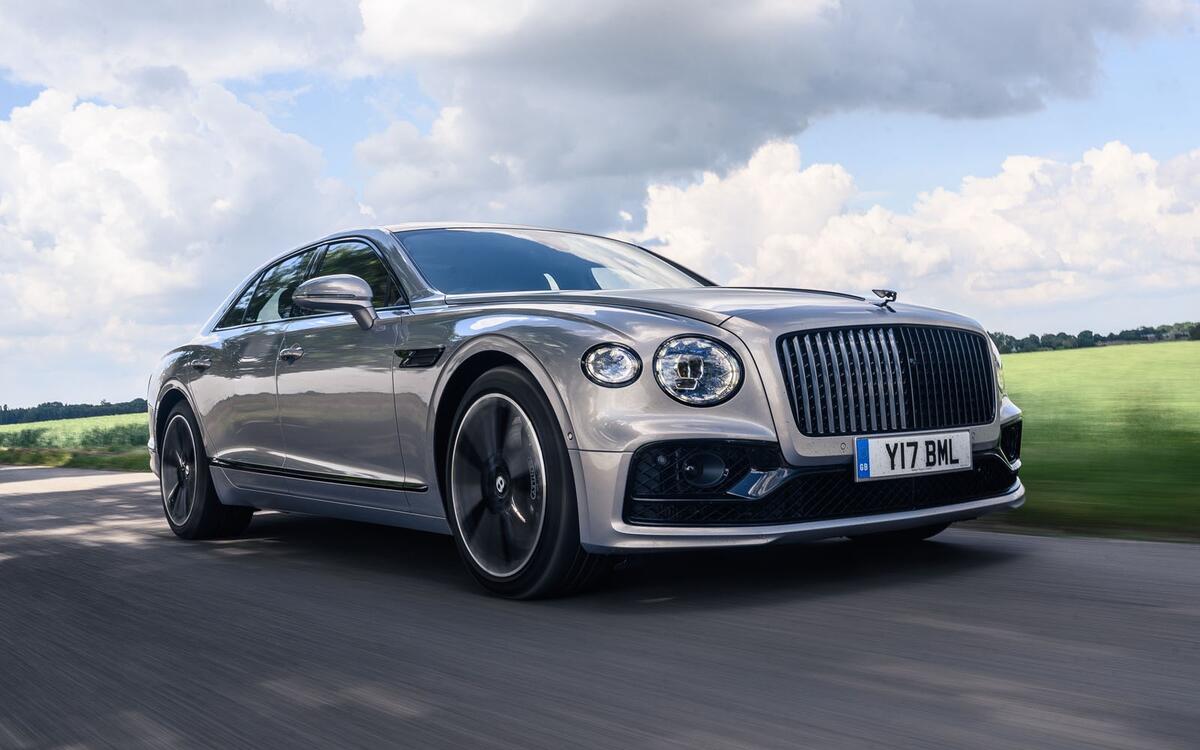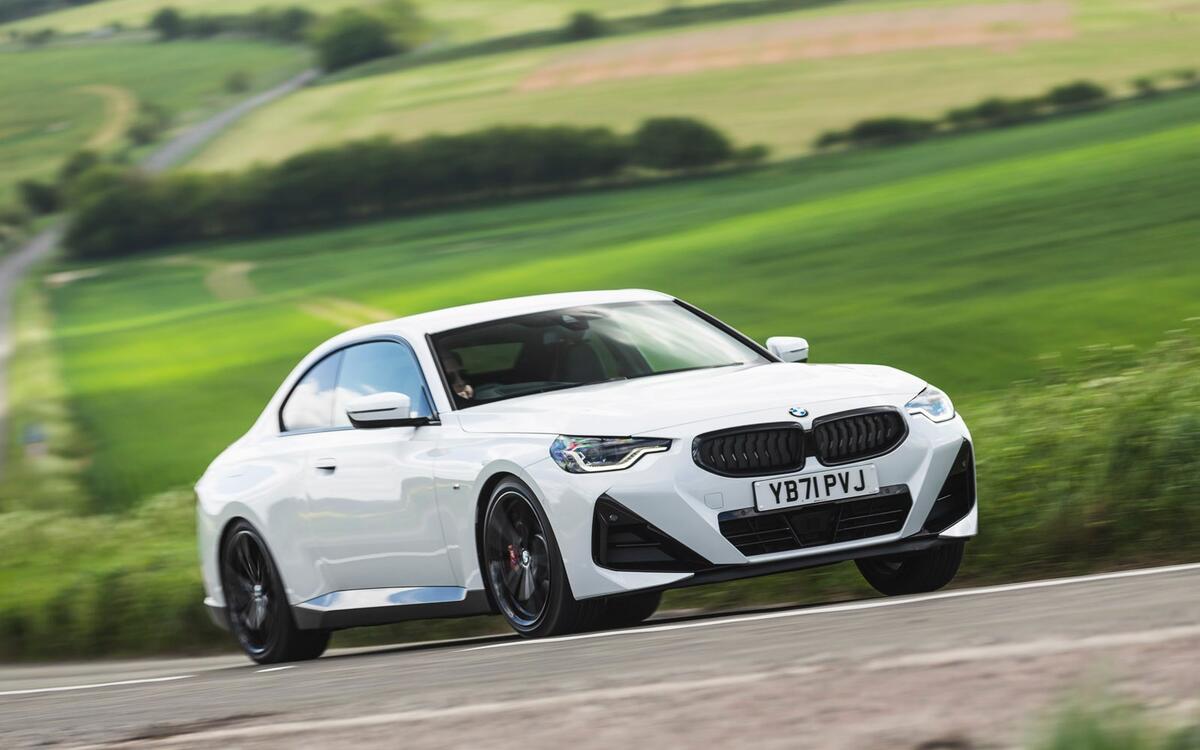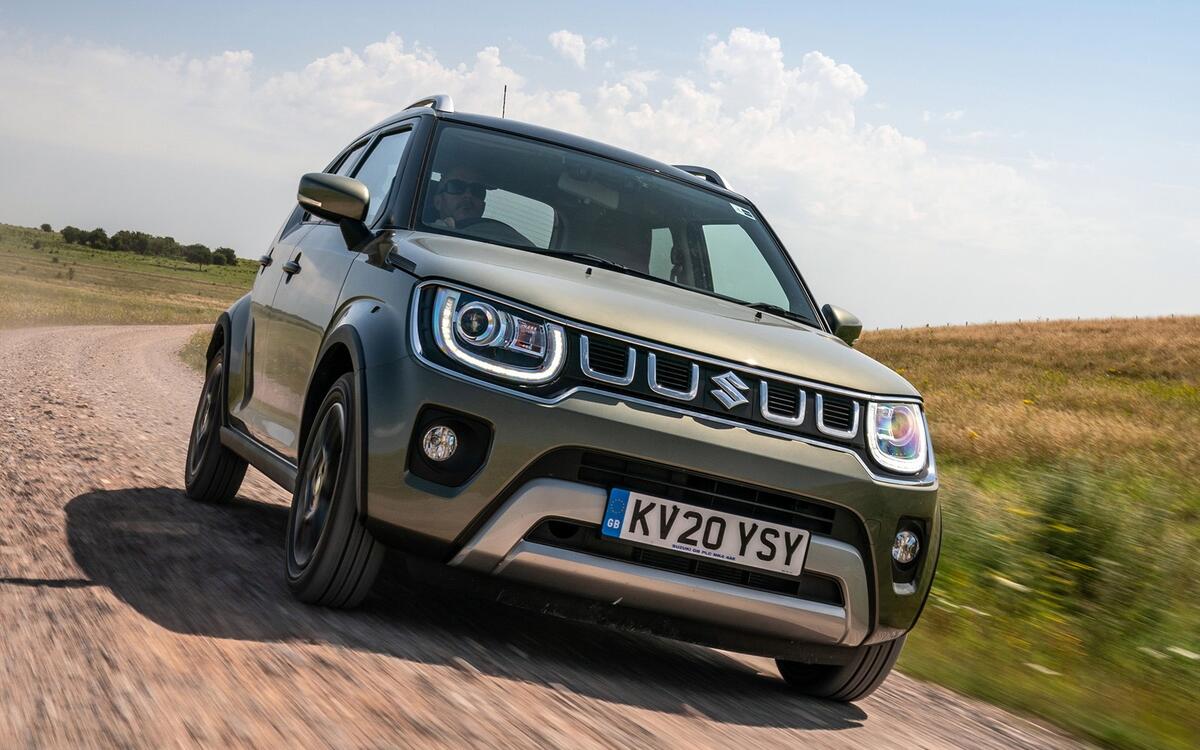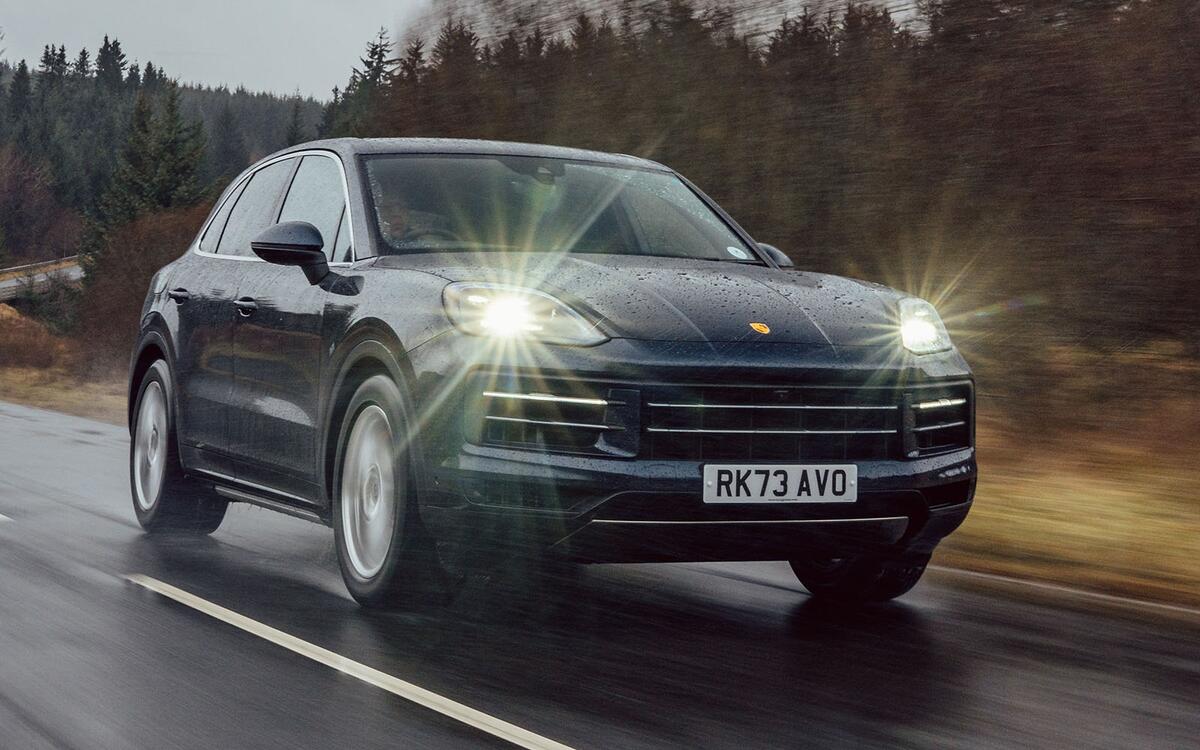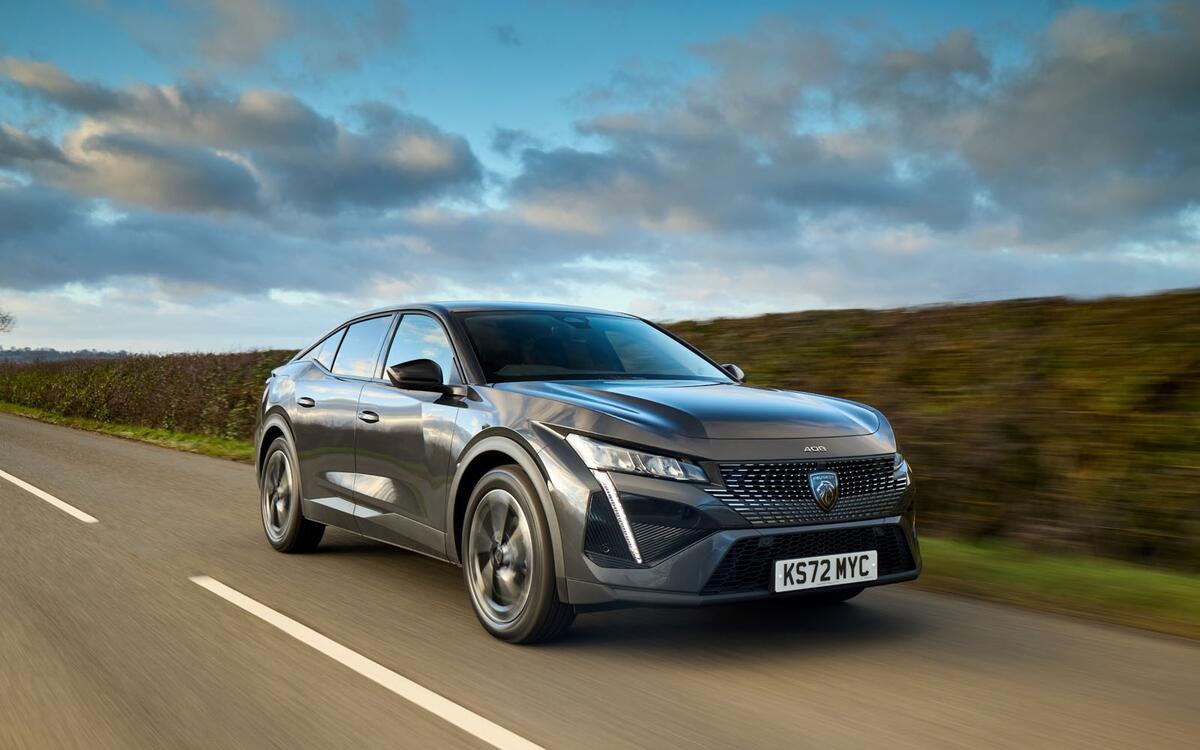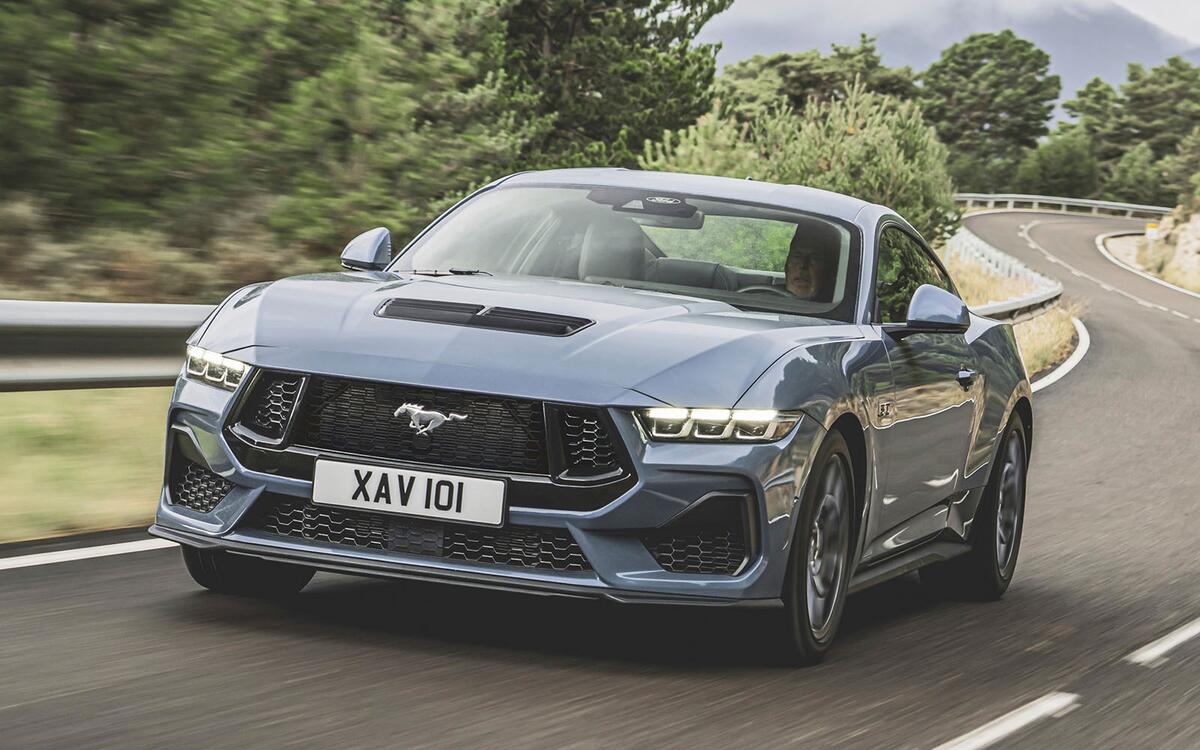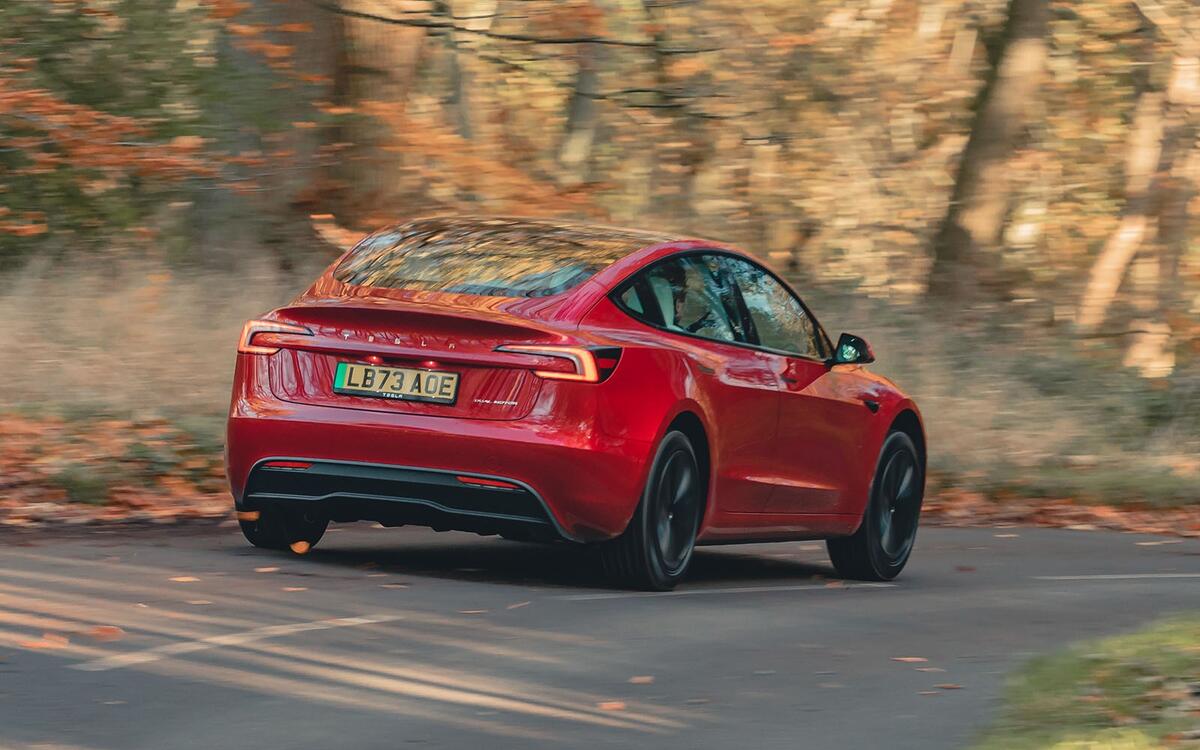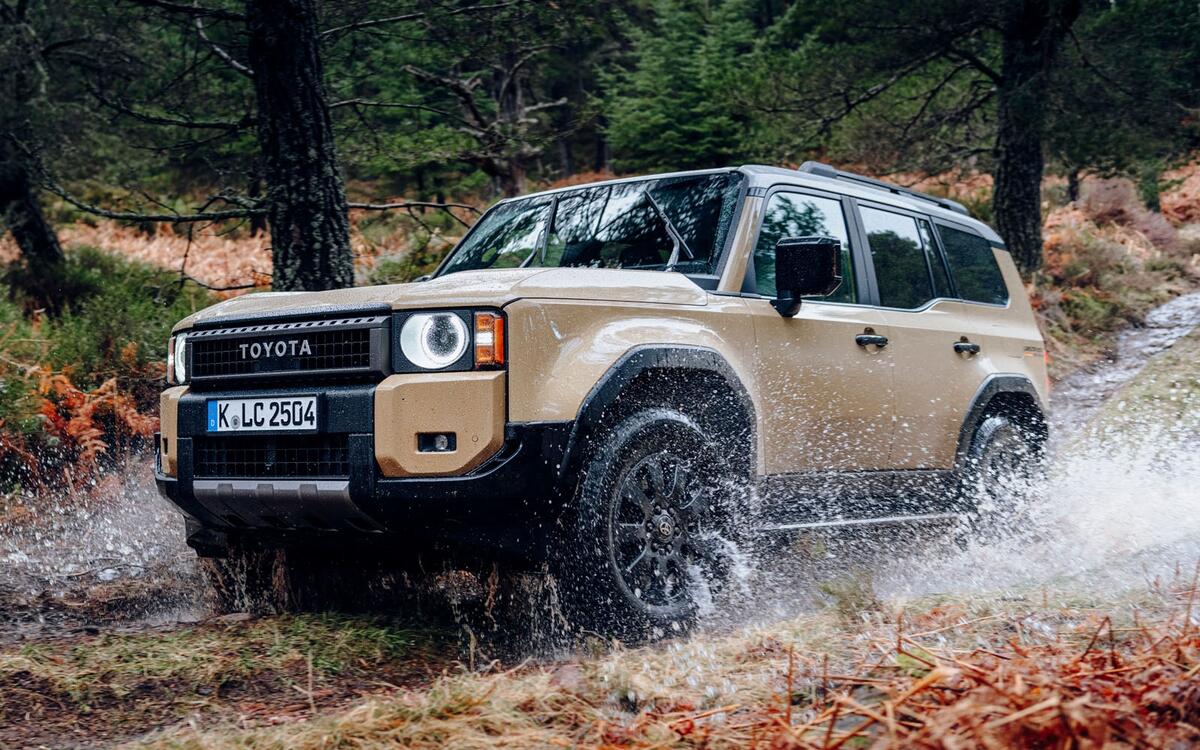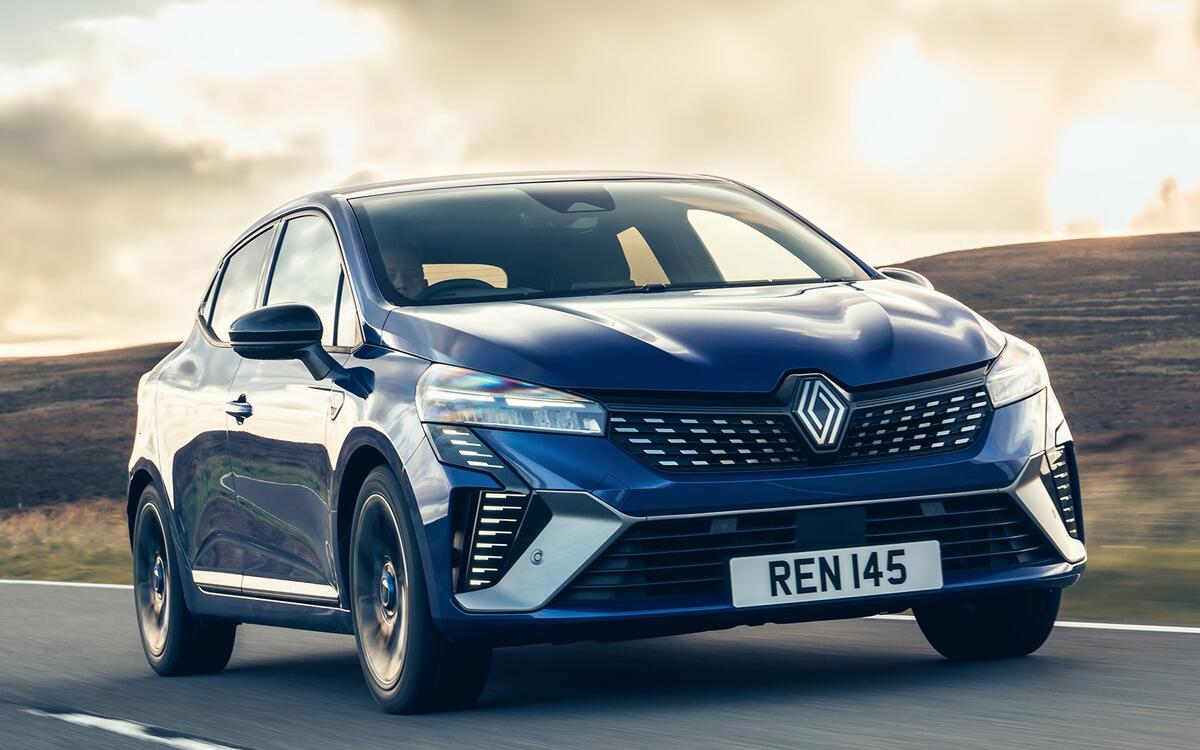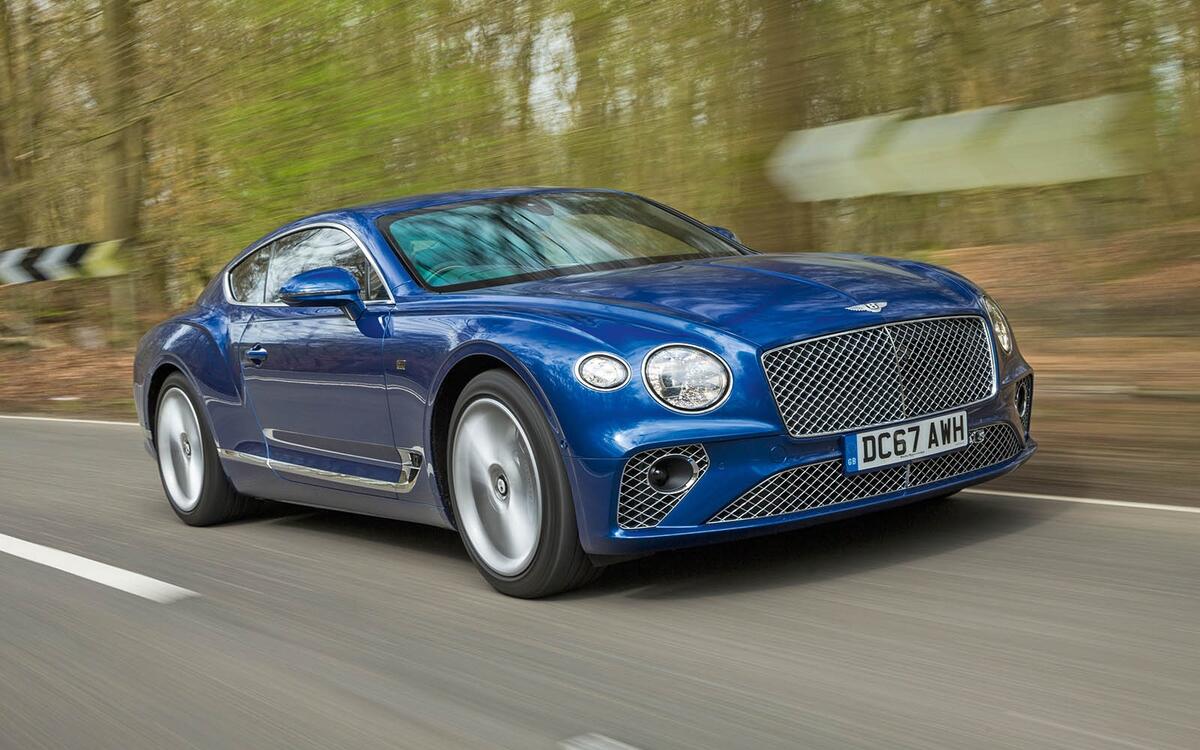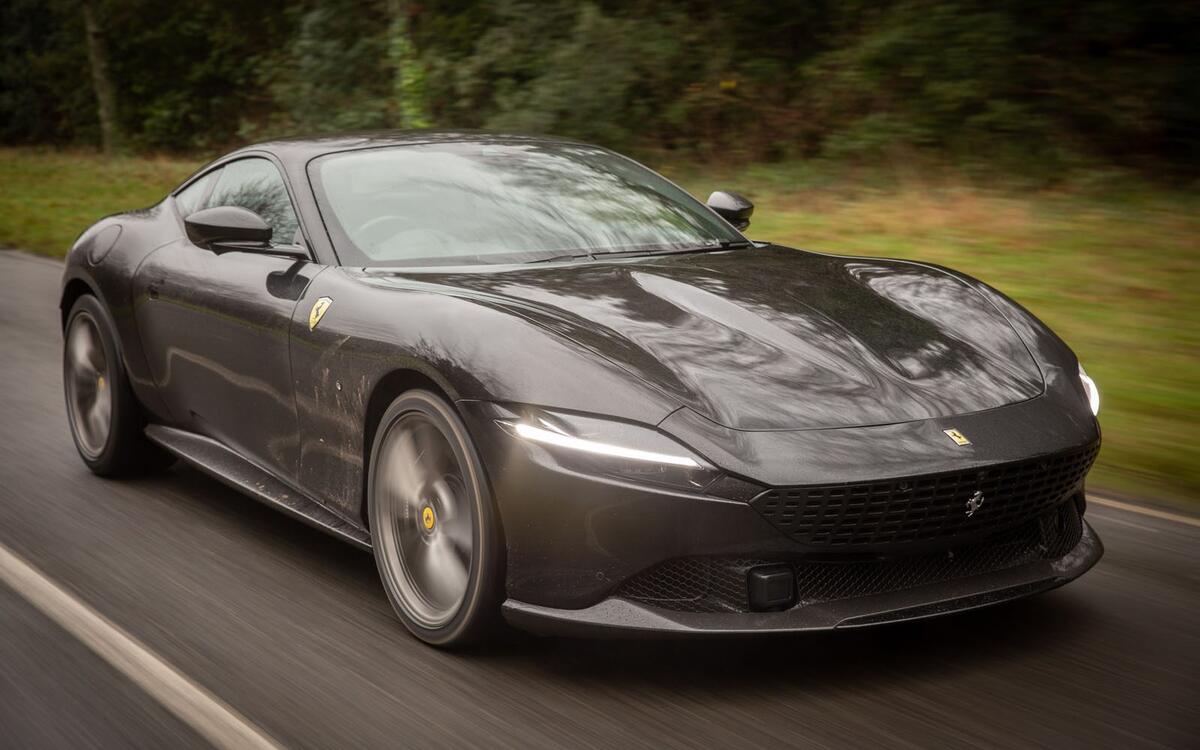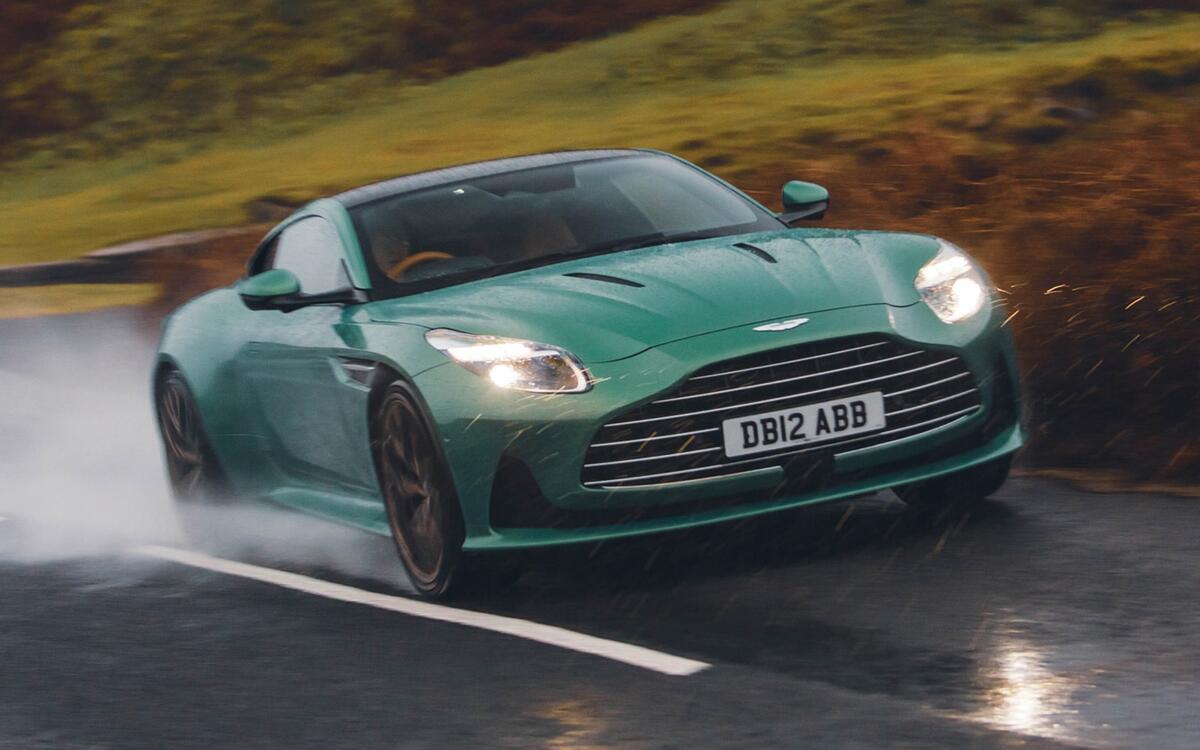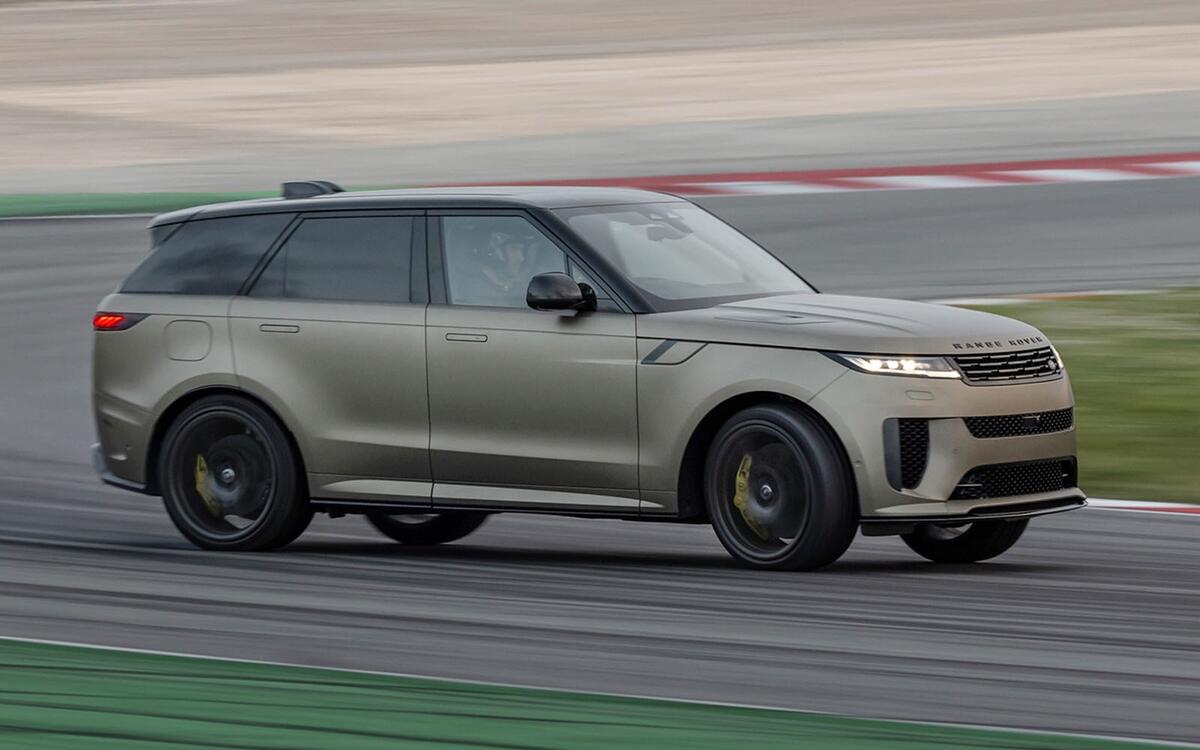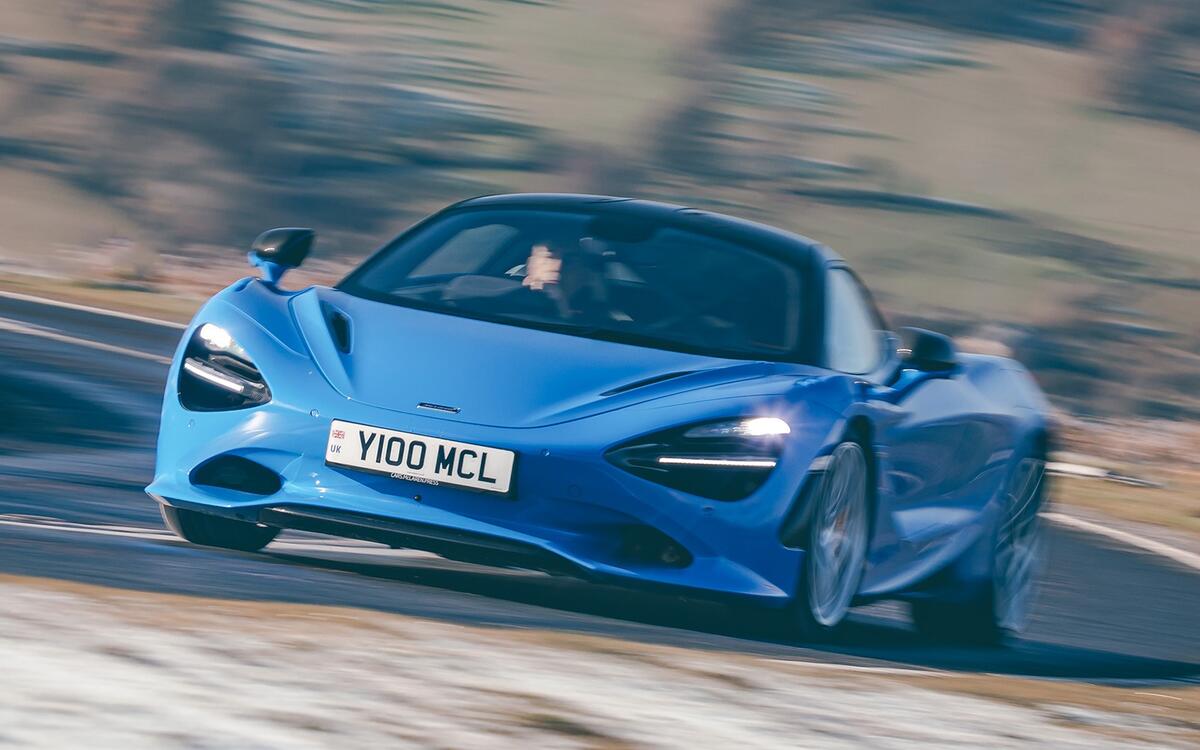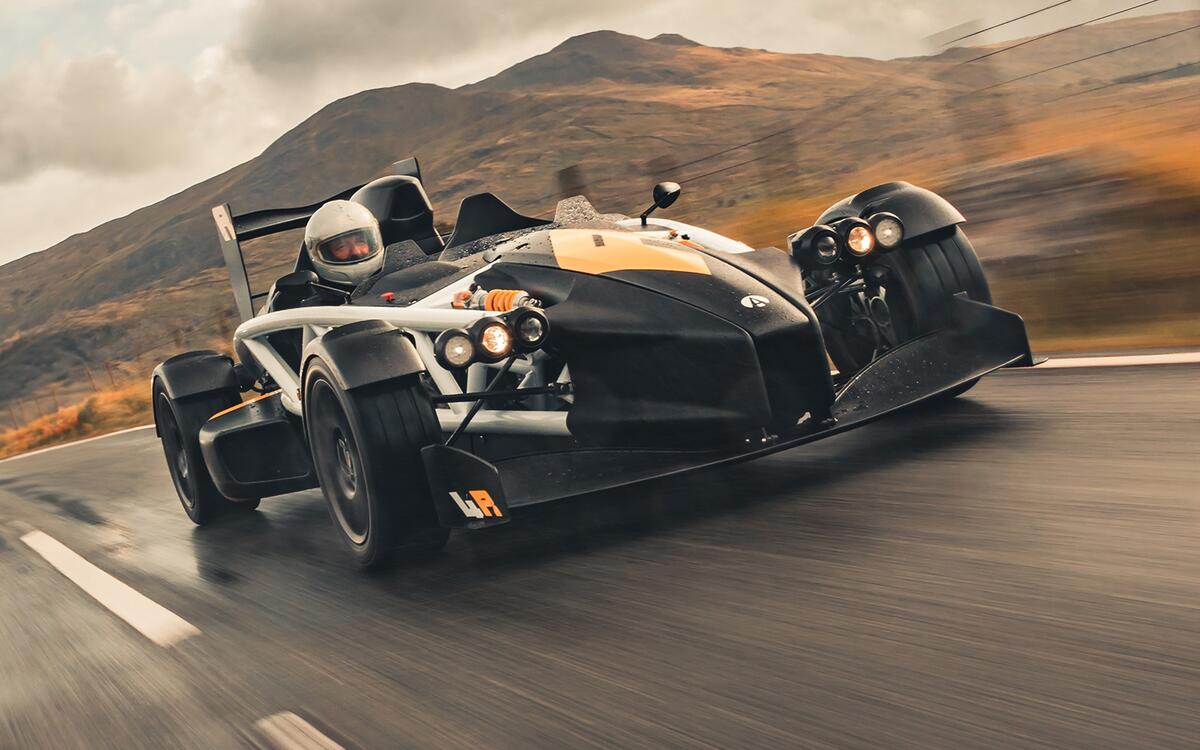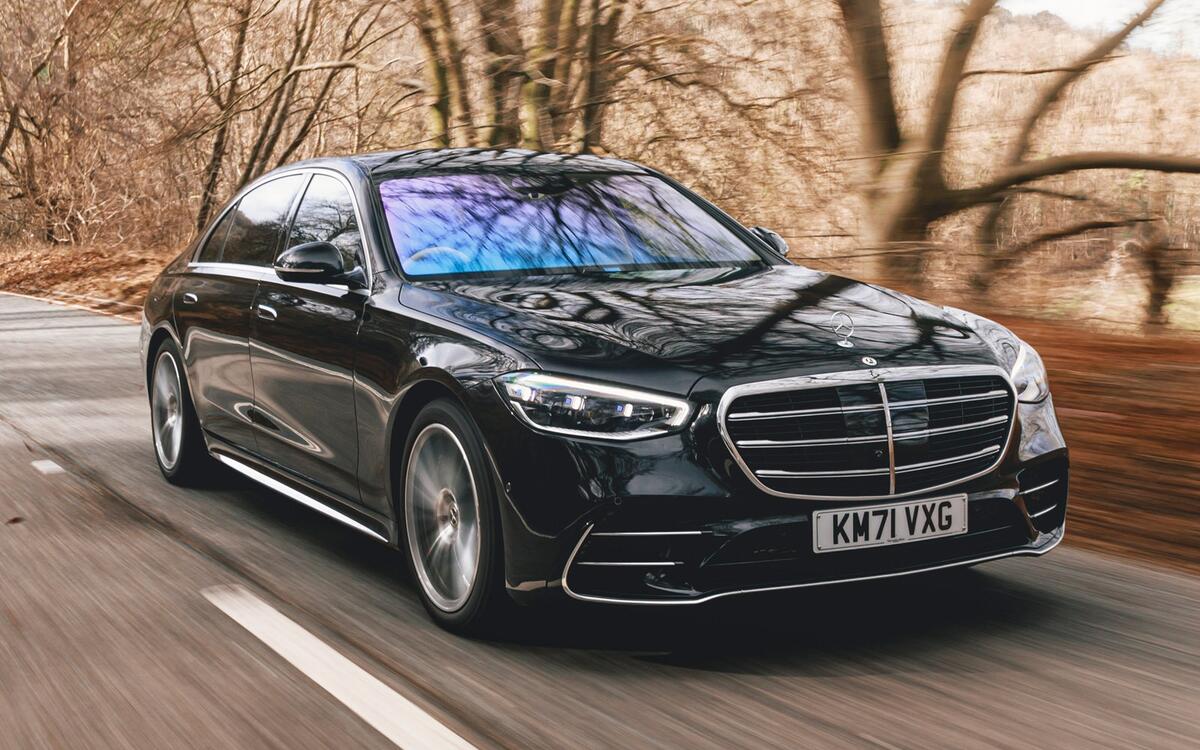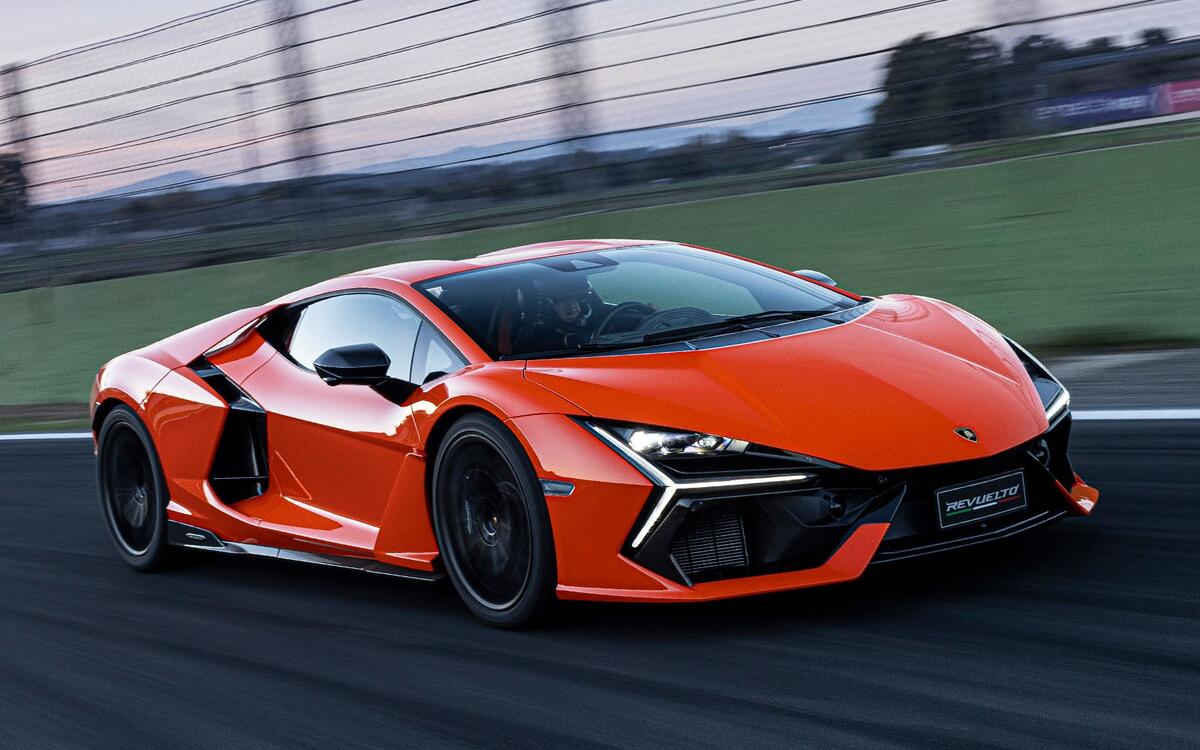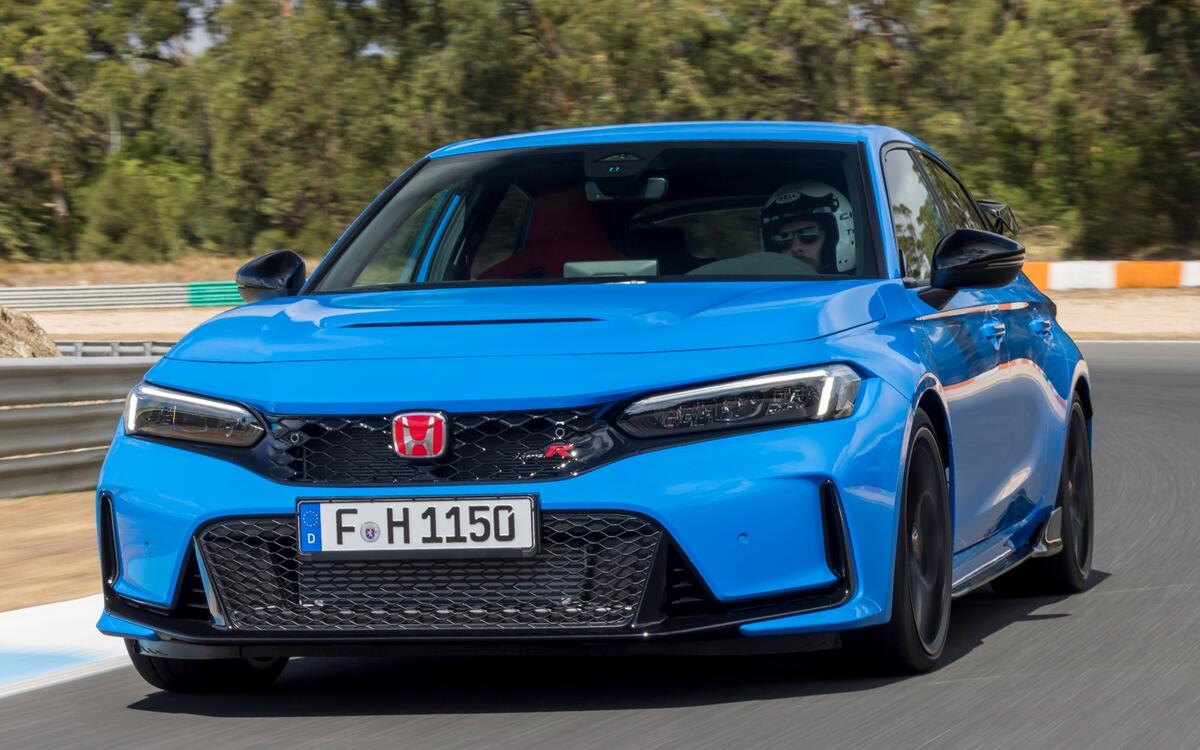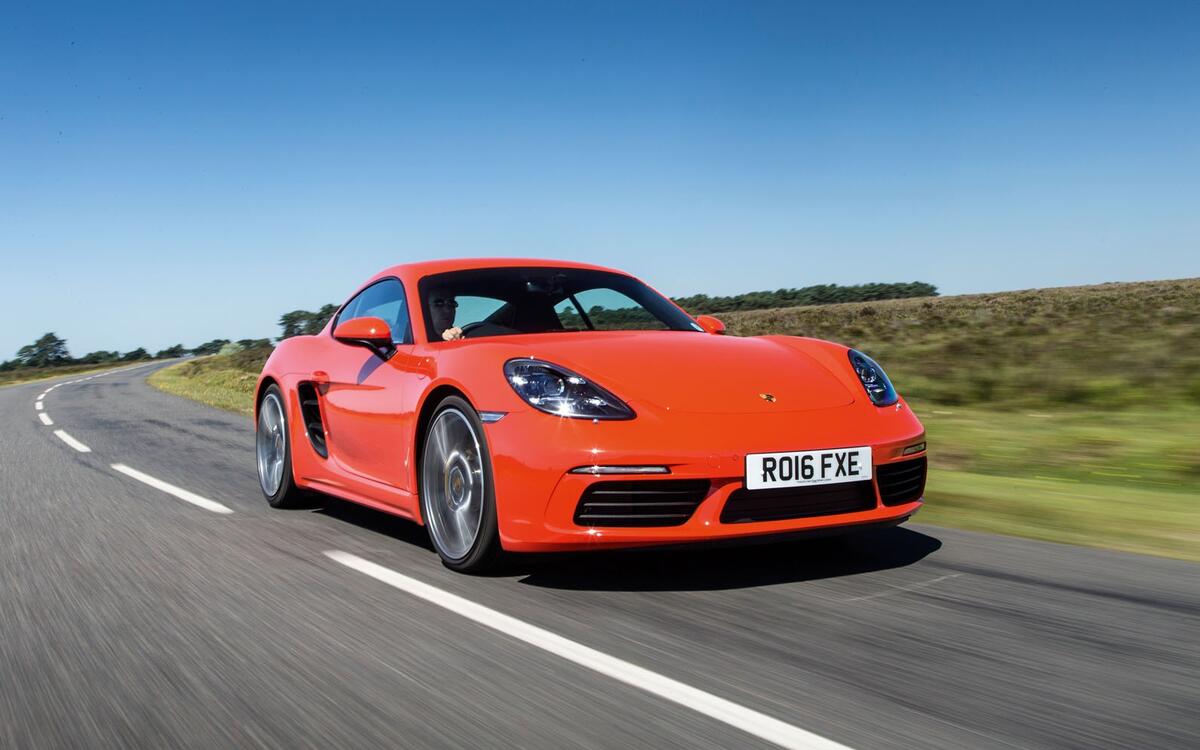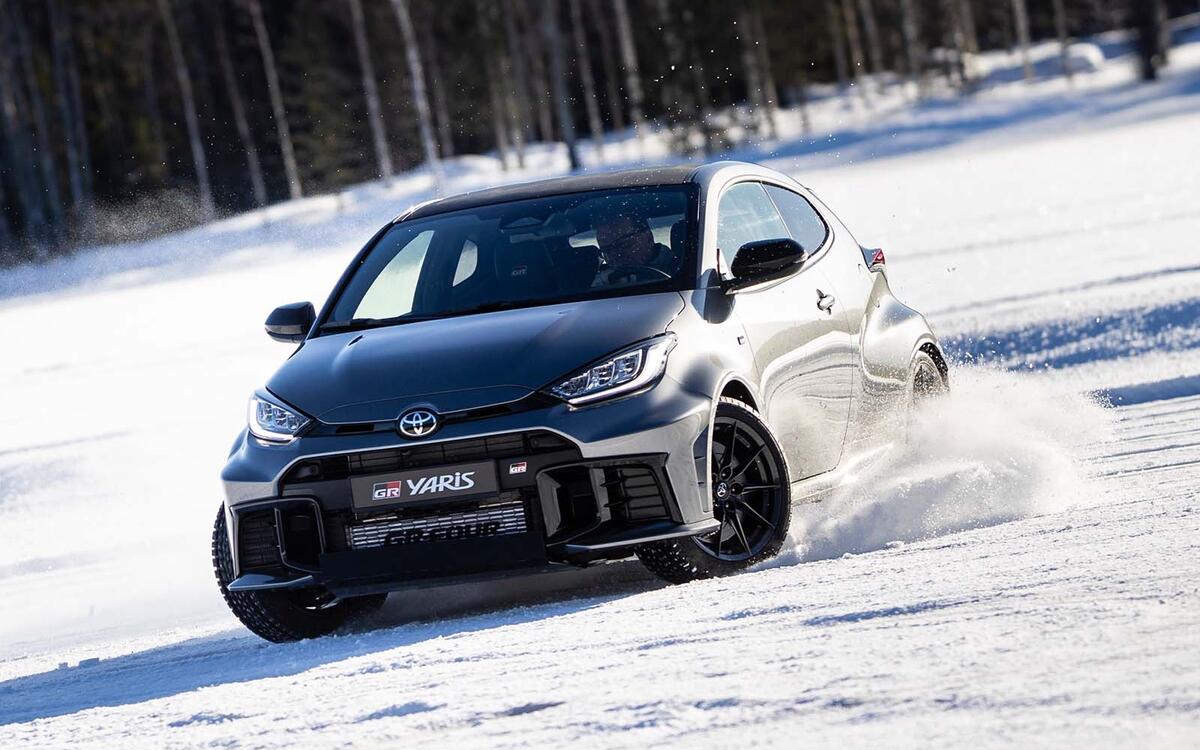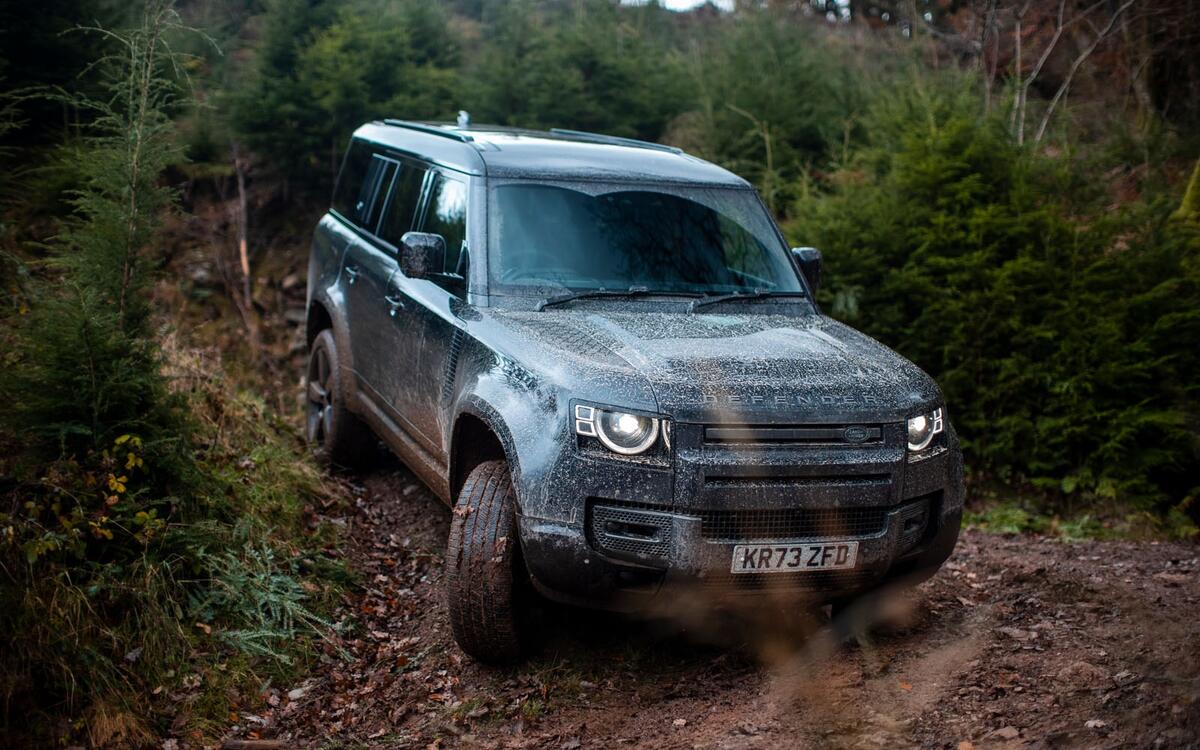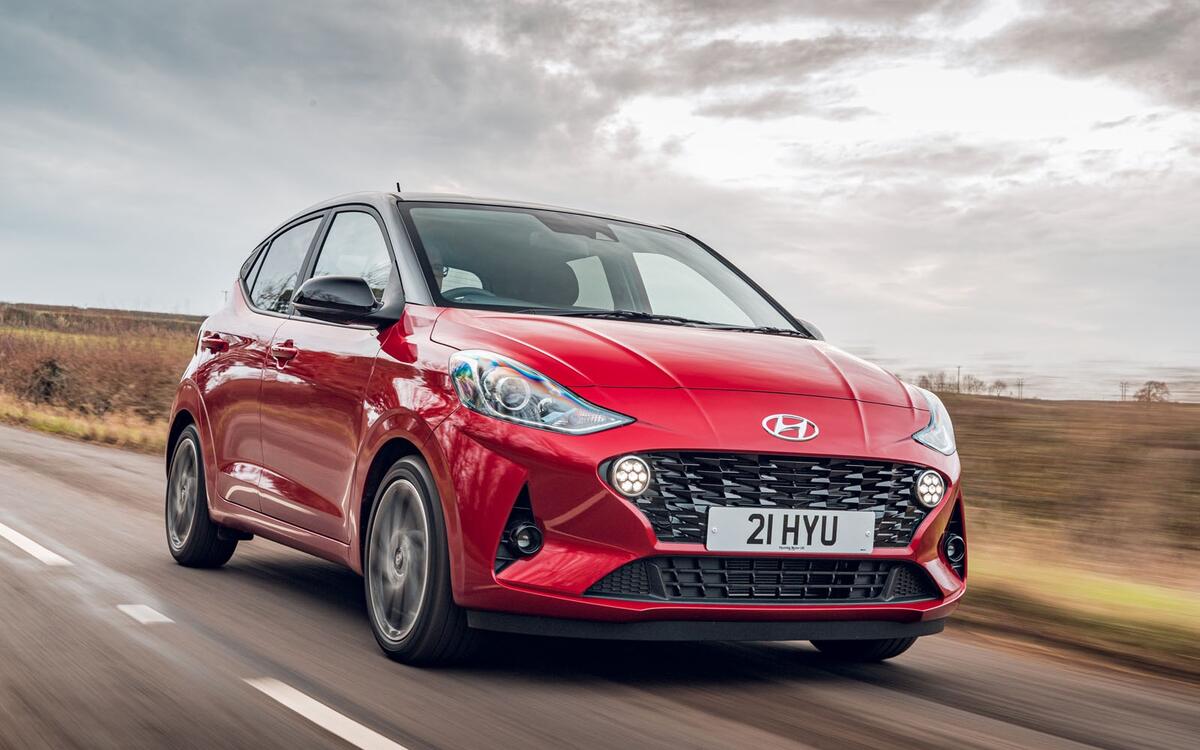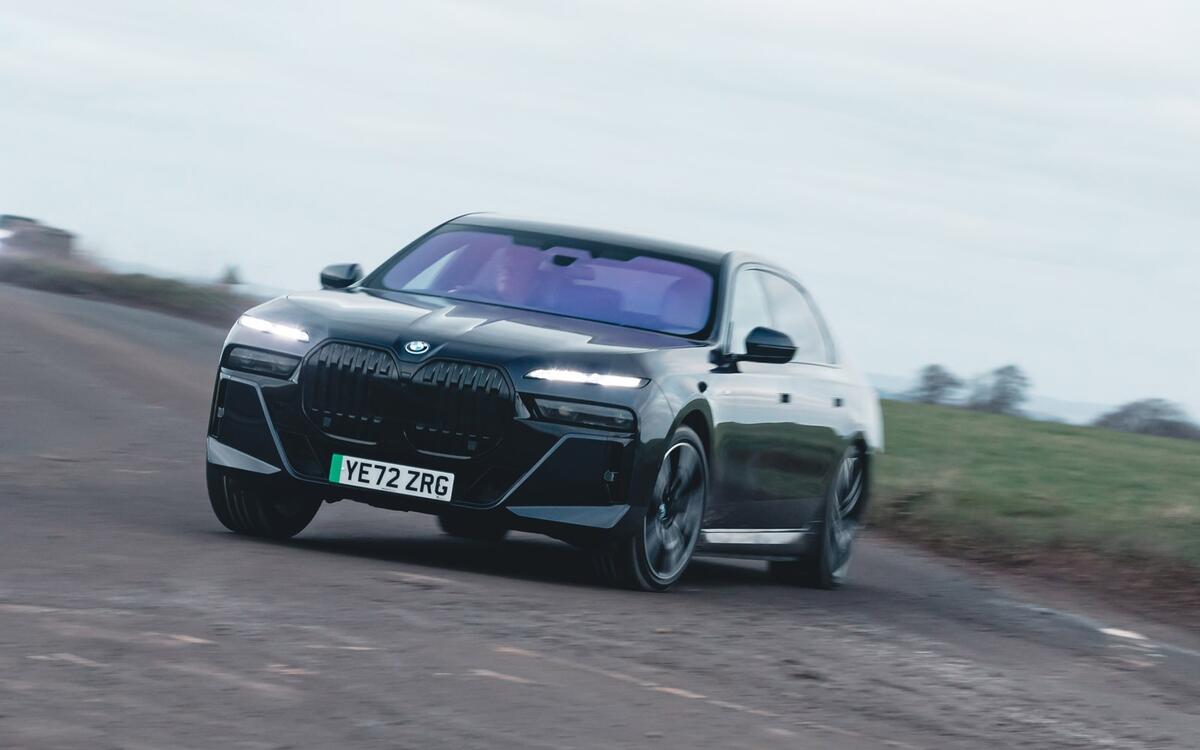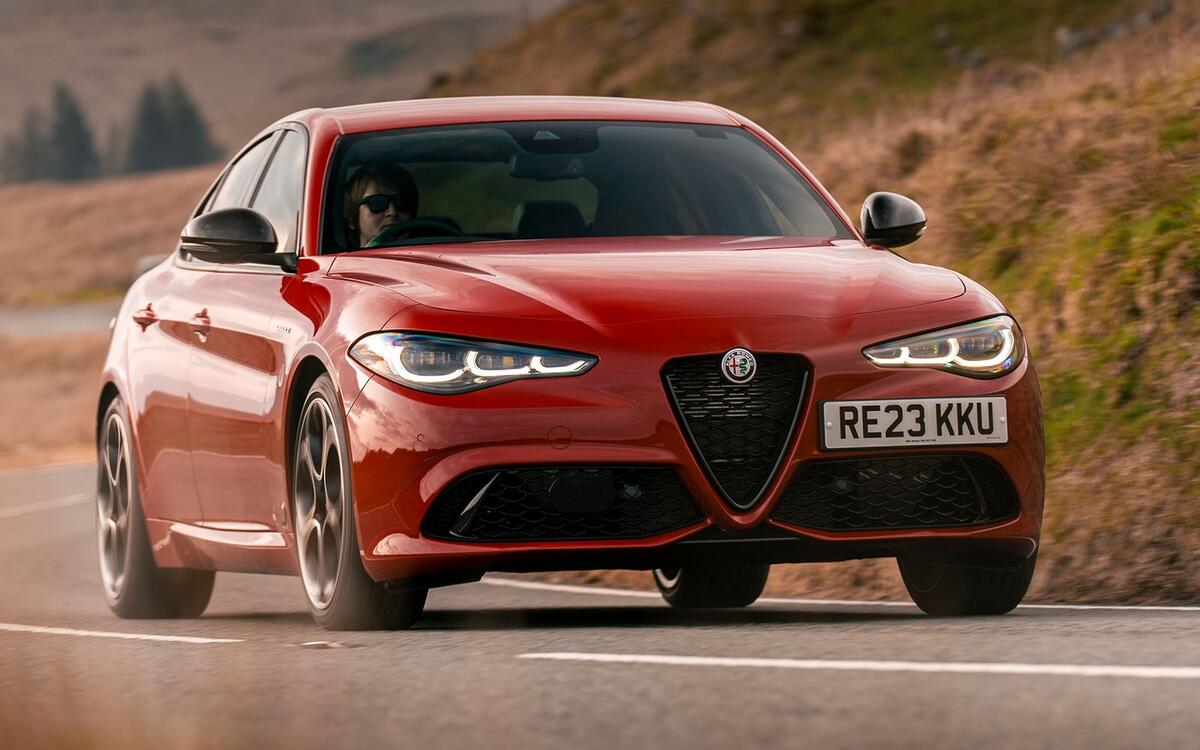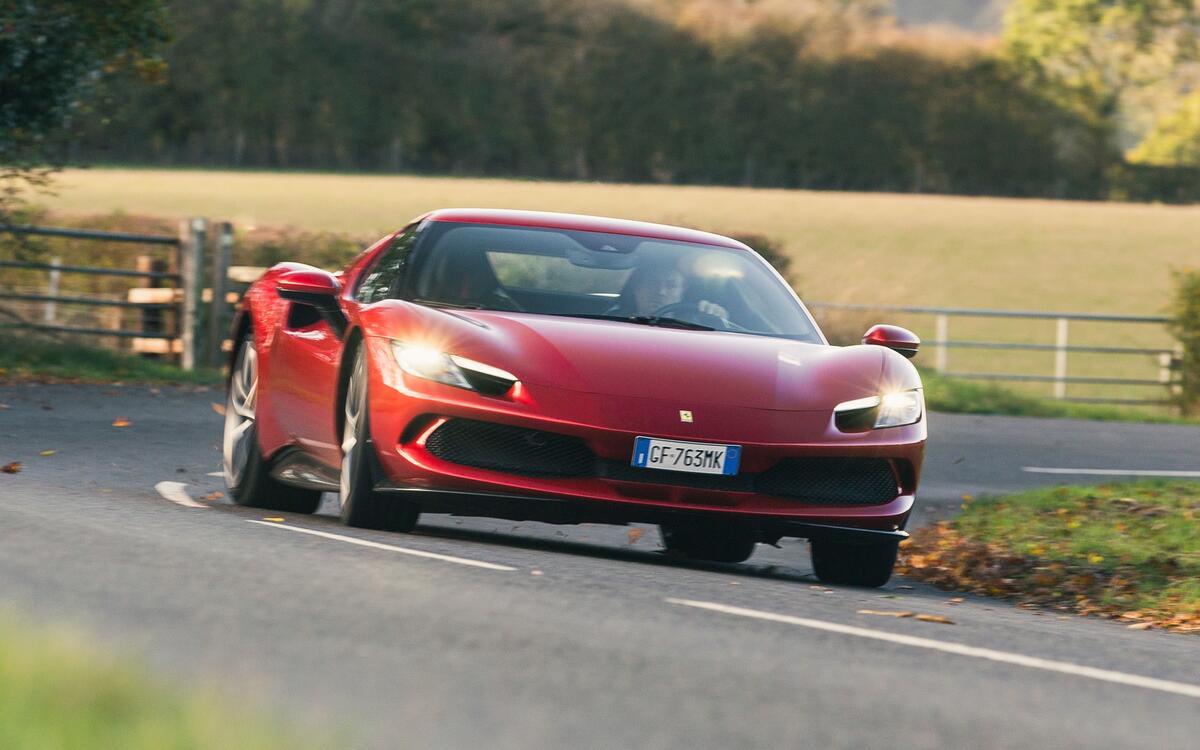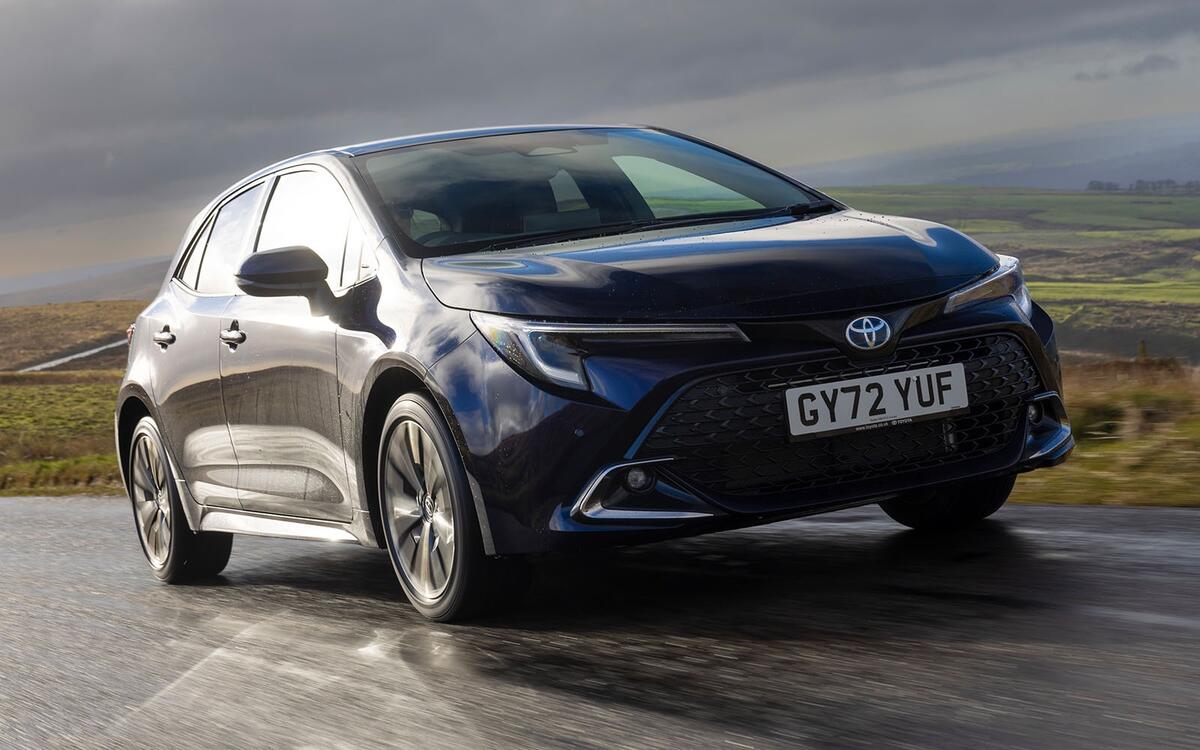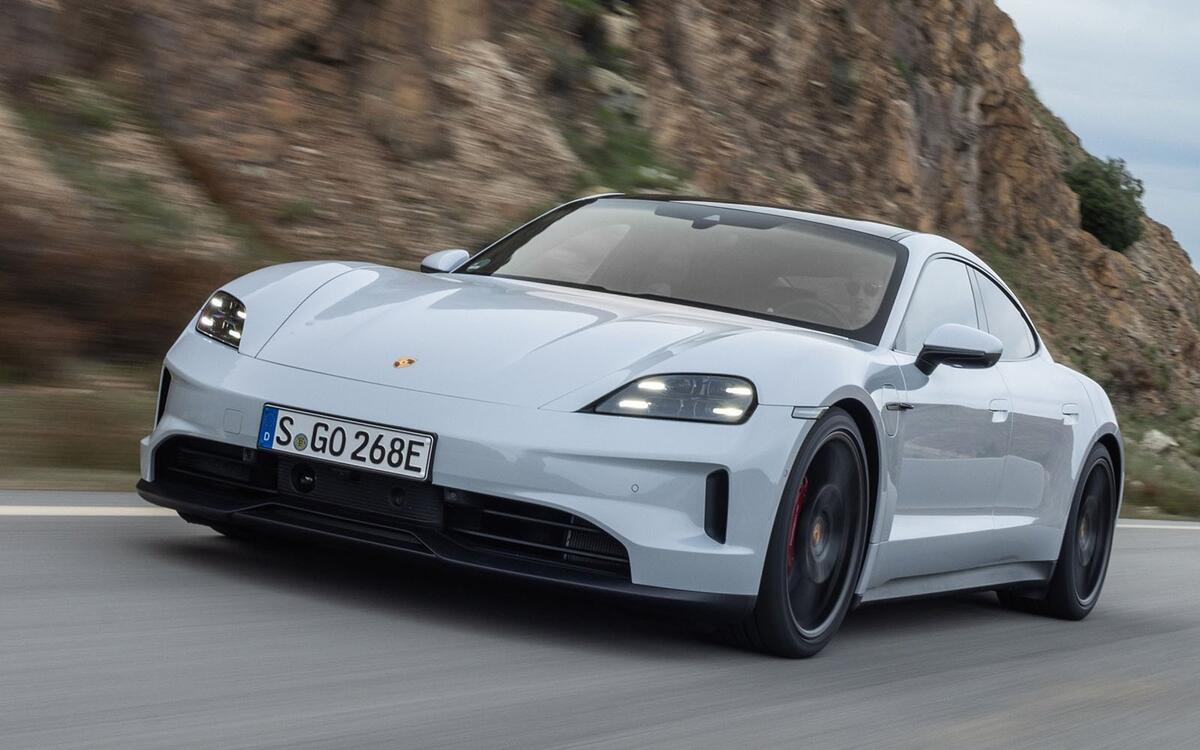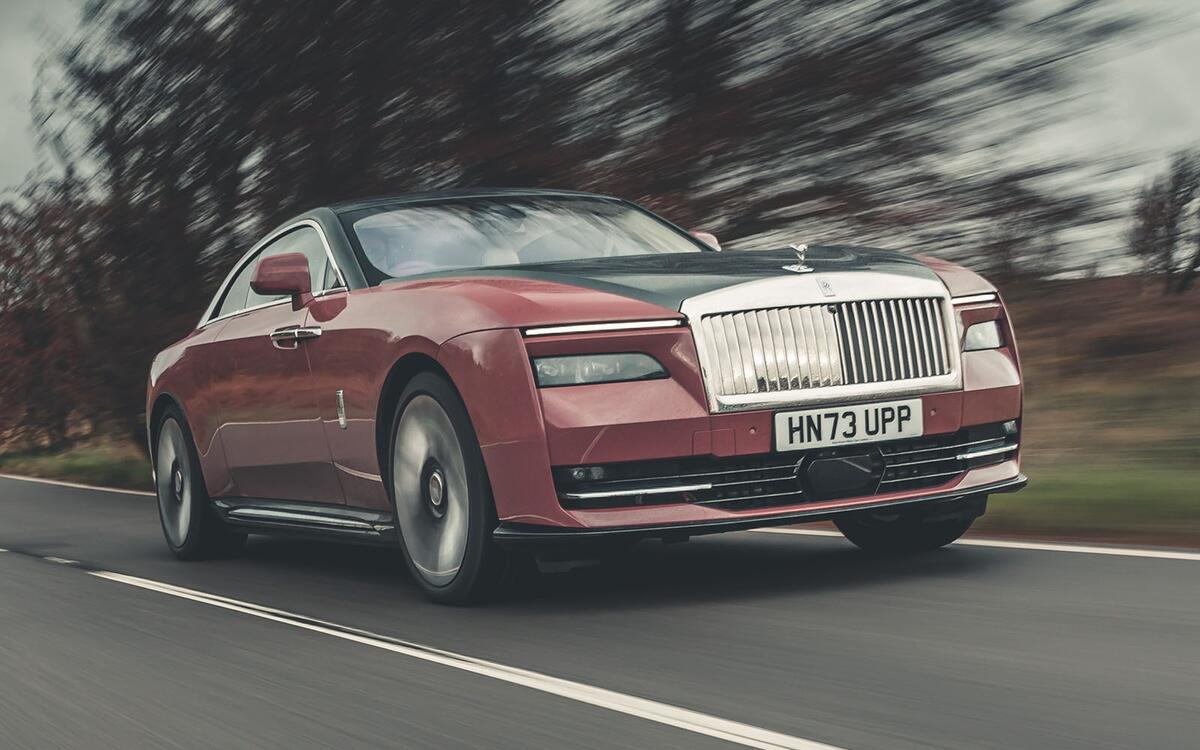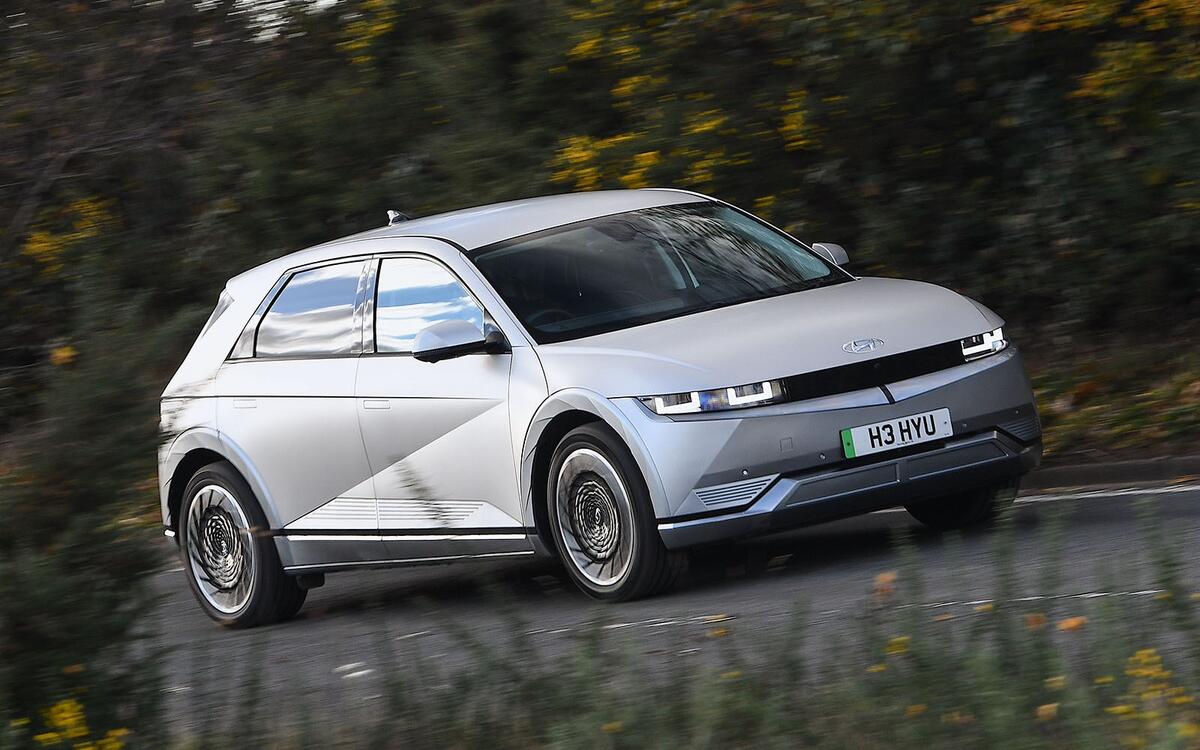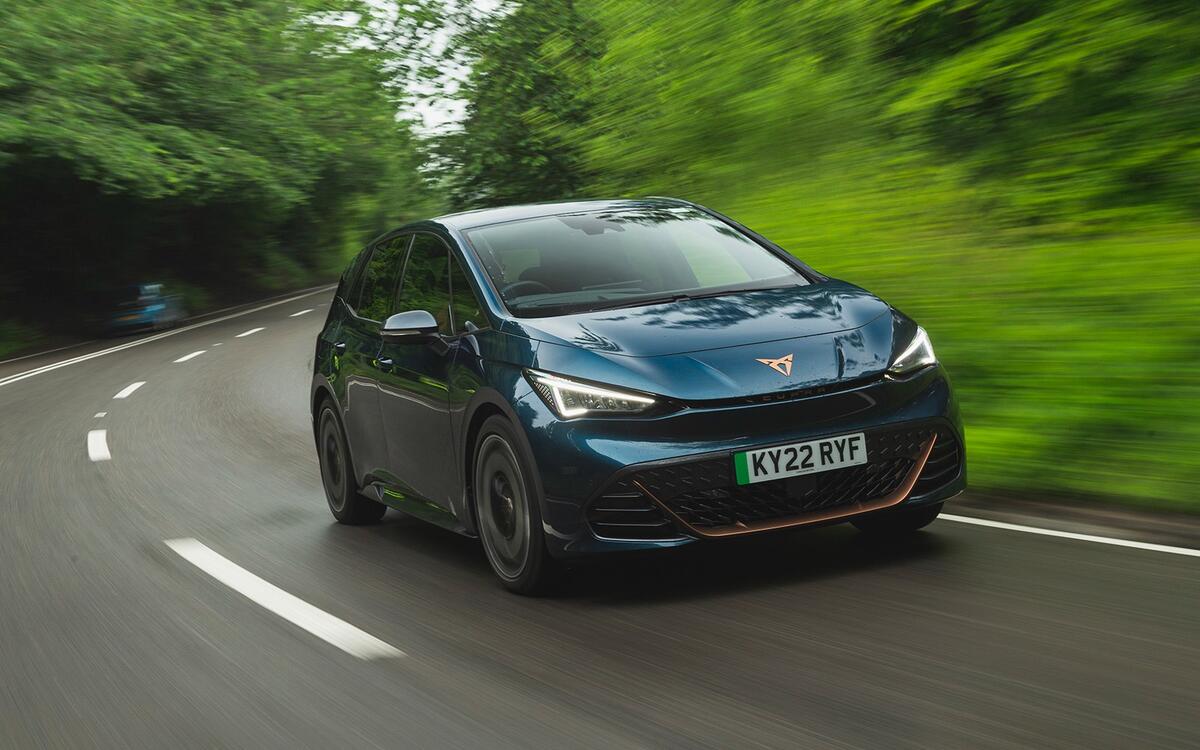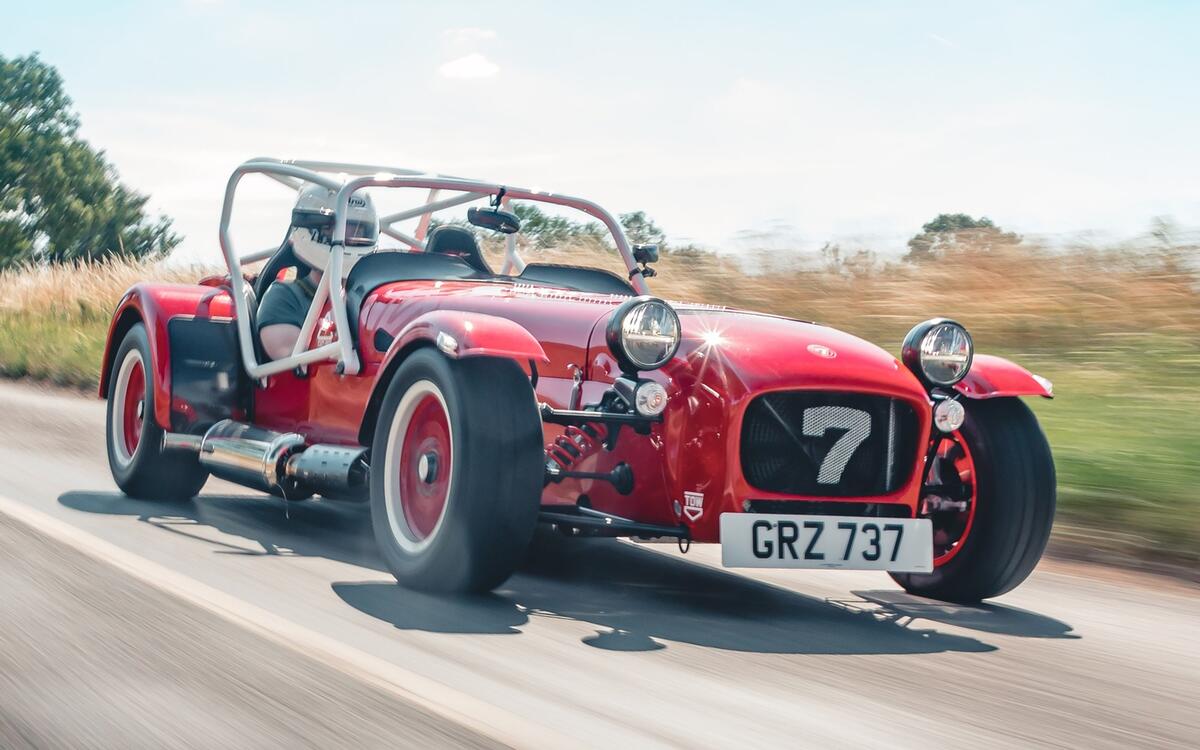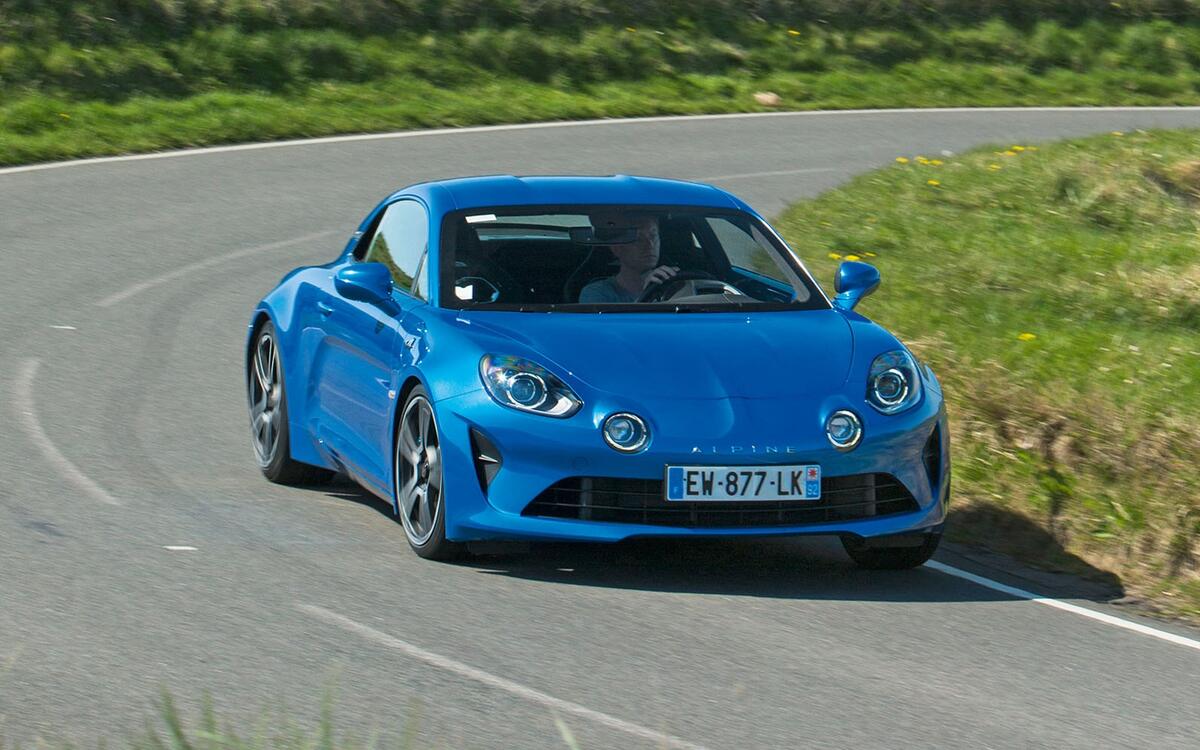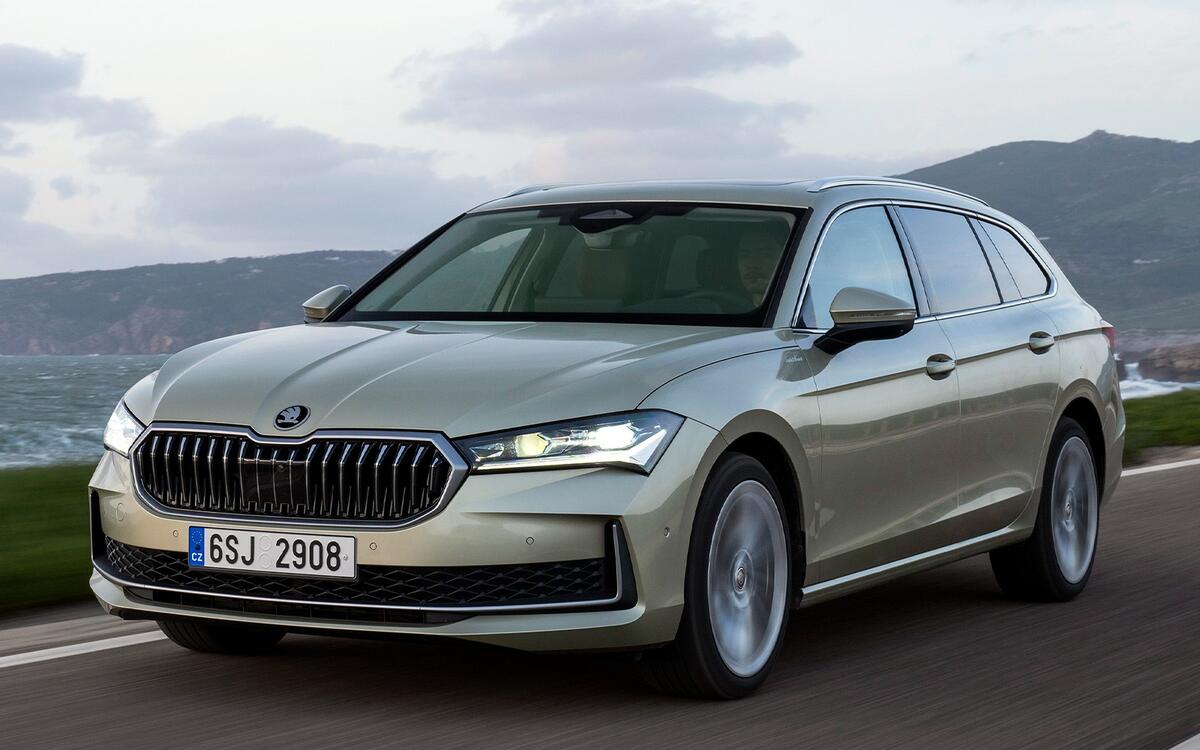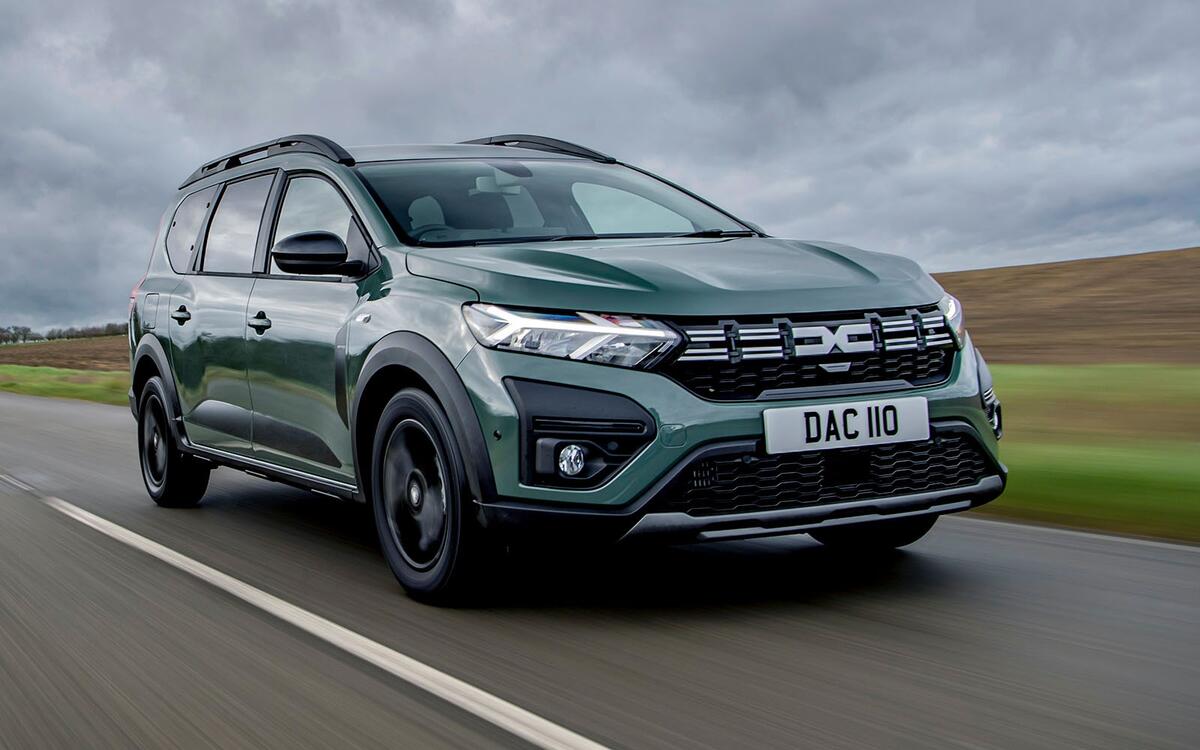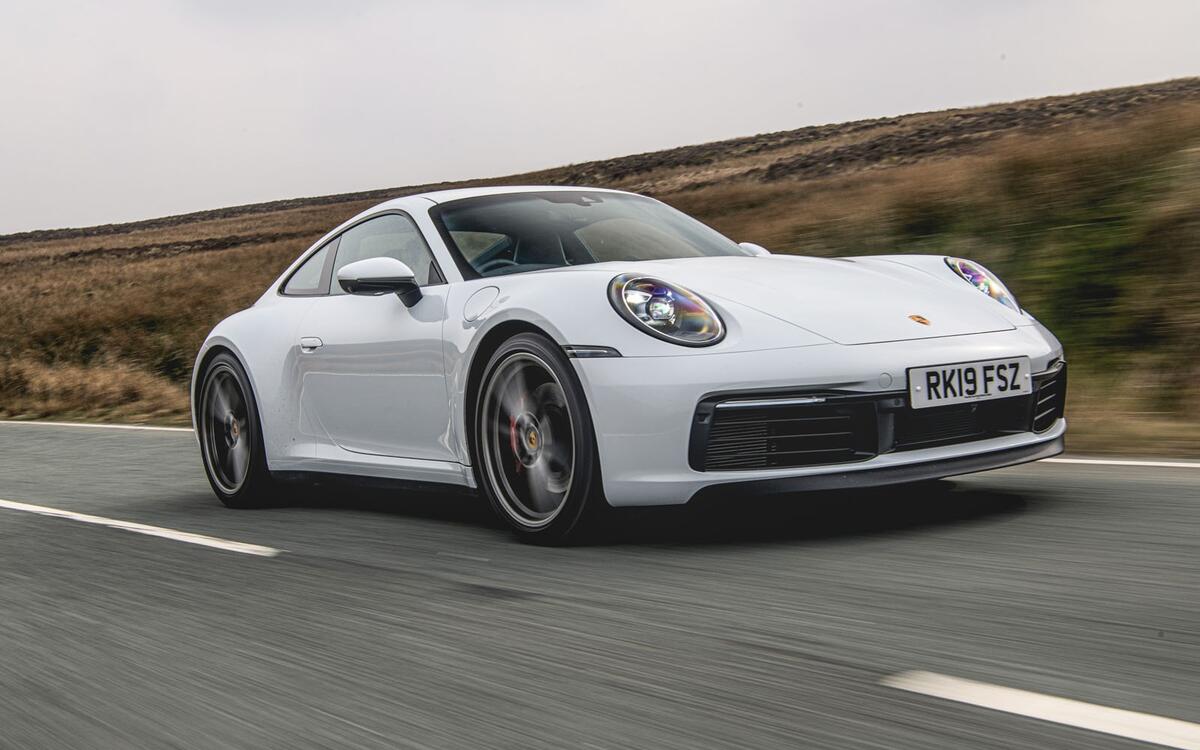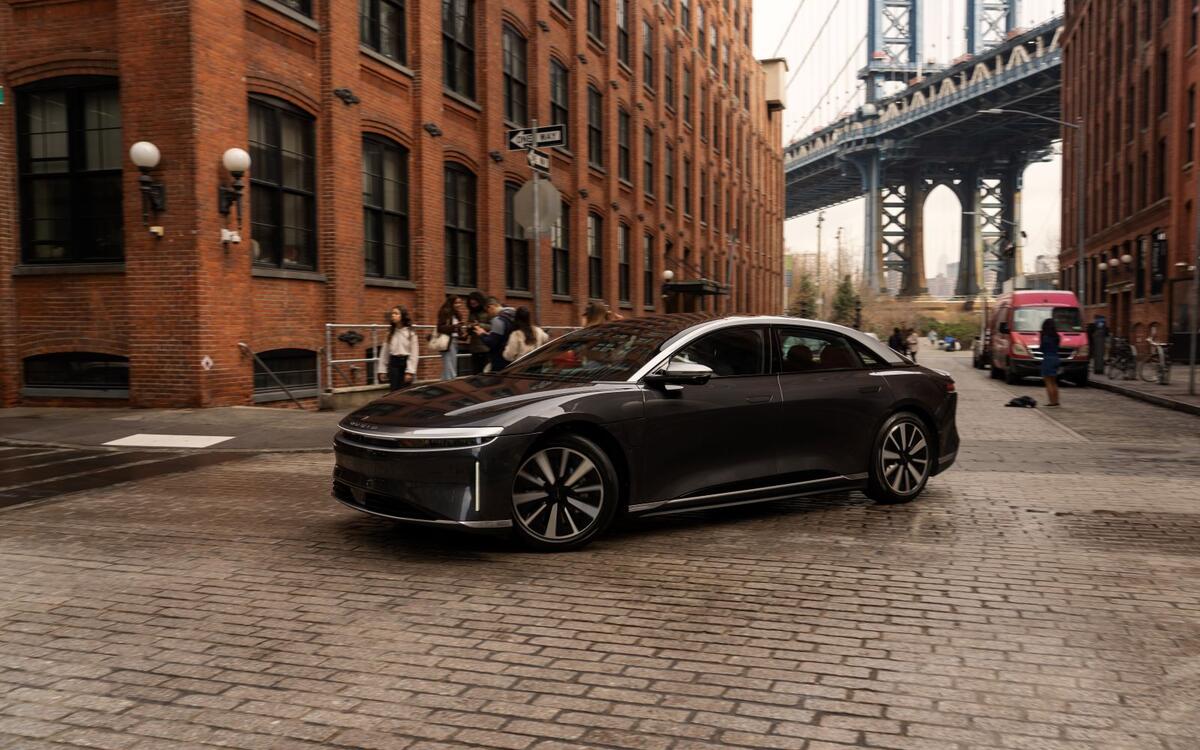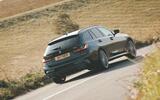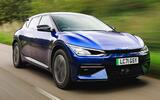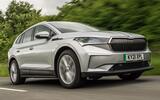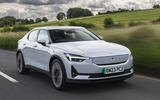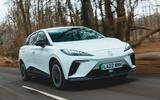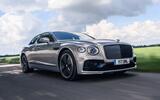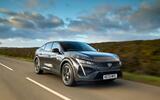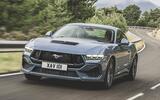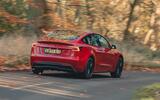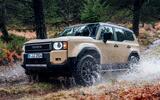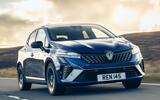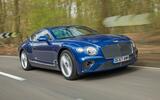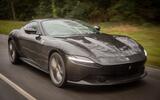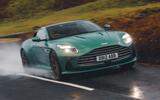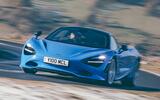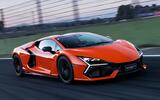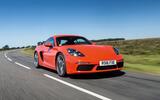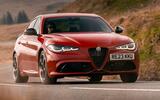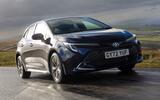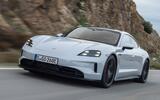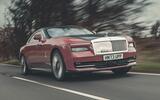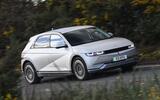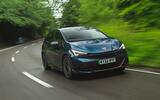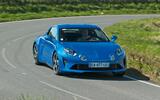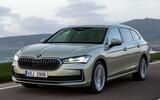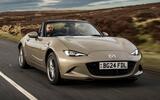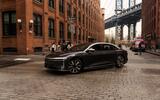 Slide of
Slide of
It’s been five years since we last ranked our outright favourite new cars.
Given one or two newsworthy things have happened in the automotive and wider world during that time, the idea was long overdue for a repeat visit.
Much has changed since 2019, of course, But since the focus here was on picking our favourites, the cars that appeal to us most, that process provided as much fun as it did fights.
Back in 2019, the Alpine A110 beat the McLaren 600LT Spider to the crown. So which car will triumph in 2024? Read on to find out…
 Slide of
Slide of
50: Ferrari Purosangue
‘It’s an SUV, Jim, but not as we know it.’ In fact, Ferrari would rather you didn’t call it one at all, if you don’t mind. This, instead, is an ‘FUV’ – one with a near-50:50 weight balance, a super-stiff aluminium chassis, an unfathomably advanced adaptive suspension system and the small matter of a screaming, 715bhp V12 mounted aft of its front axle. It’s a bona fide super-coupé that gives a better view over hedges and won’t crack its splitter on every speed bump.
 Slide of
Slide of
49: Alpina D3 and B3
What does a true performance all-rounder look like? It probably has a big boot, and four-wheel drive would be handy. Supercar-baiting straight-line pace would help trim those long cross-country jaunts, and how about a chassis that effortlessly melds unflappable refinement with scintillating dynamics? But then it would still need to be pretty fuel efficient, too. If only such an impossibly well-rounded automobile existed. Oh, hang on…
 Slide of
Slide of
48: Kia EV6
‘Electric SUV’ and ‘fun to drive’ aren’t often seen in the same sentence, but there’s genuine depth of character to the way Kia’s debut bespoke EV handles a twisting B-road, with the added bonus of ample straight-line performance – whichever powertrain you choose.
And even at three years old, the EV6 still looks bang up-to-date while touting the tech specs to contend with many a newer rival. An EV to buy with both your head and your heart.
 Slide of
Slide of
47: Volkswagen ID Buzz
Volkswagen’s reborn Bulli is cheerful, supremely capacious and impressively refined, making a strong case for itself as the ultimate do-it-all electric wagon. It can crack more than 200 miles/320 km on a charge in the real world and because it is in effect a massive ID 3, it doesn’t feel much like a van to drive. It’s a wholly different beast from the original Type 2 – and light years ahead in terms of technology – but it’s just as easy to love.
 Slide of
Slide of
46: Skoda Enyaq
It does exactly what Skoda’s first bespoke electric car needed to do: wraps a load of kit in a handsome shell at a competitive price, while sugaring the EV adoption pill with a decent range and punchy performance. The plush L&K edition touts genuine luxury credentials and the top-link vRS is a fast family hauler with a fun side.
 Slide of
Slide of
45: Range Rover
‘Peerless’ is not a word that is usually associated with a car for long because, almost inevitably, another manufacturer will come along and improve on the formula. However, we are still waiting for something to out-Range Rover the Range Rover. A few others can match and perhaps even beat its ride and comfort levels, but also being able to tackle the world’s toughest off-road conditions makes it unique.
 Slide of
Slide of
44: Polestar 2
At its maker’s first attempt, the Polestar 2 bettered the equivalent EV efforts from Audi and Mercedes. Yet it hasn’t stood still. Recently, the 2 received one of the most comprehensive and successful facelifts of recent times. Most notable was a switch from front- to rear-wheel drive in single-motor versions that usefully boosted efficiency by as much as 26% according to our road test, and its handling improved at the same time.
The 2’s pleasing blend of style, quality, drivability and efficiency marks Polestar as a brand to watch.
 Slide of
Slide of
43: MG 4 EV
The MG 4 has begun a price revolution for EVs with meaningful space and range. It appeals to lots of different buyers in different ways: we can all get on board with the low entry point, but the car’s distinctive design gives it real charm in a sea of homogenised blobs, and the chassis sophistication is up there with a Cupra Born. The XPower version hasn’t been quite as revolutionary for electric hot hatchbacks, mind.
 Slide of
Slide of
42: McLaren Artura
The Artura’s development was as painful as they come, yet thankfully the end result was worth the difficult birth. The Artura blazes a trail of sorts by adopting hybrid technology in a ‘mainstream’ McLaren for the first time, and it employs it to both simply and subtly make a better version of the McLaren formula that we’ve got to know so well over the past decade.
That means true daily usability, a Lotus-like ride and fluent handling – although it still won’t be exciting enough for some.
 Slide of
Slide of
41: Rolls-Royce Phantom
There’s a case to be made for the Phantom to surge past the 40 cars ahead of it and into top spot if our selection criteria were based solely on refinement and opulence. Buyers won’t think twice about the huge price, the car’s vast size or its somewhat limited real-world ability, but that’s why it sits here in a ‘lowly’ 41st place. The best car in the world? Perhaps not, but we would fight its corner for being the grandest and perhaps even the greatest.
 Slide of
Slide of
40: Chevrolet Corvette
Forget everything you knew about the Corvette: this is a very different beast. The switch to a mid-engined line-up for the first time in the model’s storied history brought the intended benefits to handling, and although it doesn’t better Europe’s best from Porsche, Lotus and Alpine, it is in the conversation for the first time.
We gave the Corvette our Best Dream Car award a couple of years back, and it’s a title it wears well. We have all craved a piece of Americana in the past, but now the reality lives up to the legend.
 Slide of
Slide of
39: Bentley Flying Spur
The Flying Spur seems to have come of age since the Mulsanne exited Bentley’s line-up. The Flying Spur has since been made more luxurious than ever, while still handling better and driving harder than a car of its size and positioning has any right to do.
The demise of the W12 does diminish the four-door Conti’s appeal slightly as a supreme refinement machine, but the V8 remains an excellent choice – and a hybridised version of that is to come. This is the four-door saloon at close to its very best.
 Slide of
Slide of
38: BMW 2 Series and M2
The 2 Series is one of the best examples of a dying breed: the front-engined, rear-wheel-drive baby coupé. It’s too heavy to reach the cult status of the Toyota GR86, yet it remains an extremely compelling affordable driver’s car and has the measure of all of its front-wheel-drive rivals. The M2 version spawned by the base car is wonderfully playful and a more capable all-rounder than the model it replaced, albeit at a substantial extra price.
 Slide of
Slide of
37: Suzuki Ignis
No car maker can match Suzuki’s character and charm. Forget the rebadged Toyotas padding out half of its range; instead, focus on the cars Suzuki does itself, such as the Ignis. City car or SUV? Who cares? It’s epic. The Ignis is just 3.7m long and weighs well under 1000kg even with 4WD and mild-hybrid tech, and the packaging is a marvel. A model car brought to life.
 Slide of
Slide of
36: Porsche Cayenne
The recently and substantially facelifted Cayenne carries new technology that has been introduced in a way that could teach rivals a thing or two about not being seduced by touchscreens in place of usability.
Our favourite part is the use of a petrol V8 in a fairly humble version, harking back to the days of Q cars when such engines were used for torque and refinement as much as for outright pace and performance. The Cayenne’s driver appeal remains as strong as ever.
 Slide of
Slide of
35: Peugeot 408
Peugeot’s unusual fusion of saloon and SUV succeeds in bringing a distinct sense of style to the sort of high-riding body that has been finding favour with modern buyers. But the 408 isn’t simply a success due to its four-door fastback design: it’s built to take a variety of ICE and electric powertrains, the ride and balance is strong, it offers plenty of space and the interior feels the part. An interesting and unusual idea well executed.
 Slide of
Slide of
34: Ford Mustang
The Mustang has long been the only ‘traditional’ car Ford offers in the US, and when the current Ford Focus goes out of production next year, that will also be the case for most of the world. That still feels hard to believe – but it also highlights the enduring global appeal of Ford’s muscle car. The seventh-generation model will arrive in the coming months, powered by a 5.0-litre V8 for the most part. Enjoy it while you can.
 Slide of
Slide of
33: Tesla Model 3
We suspect few placings on this list will stir as much comment and attention as this one. But so polarising have Tesla and its boss Elon Musk become that this would be true regardless of where the Model 3 was ranked. That’s a shame, because this vehicle should be lauded as a genuine game-changer, and the recent updates have addressed many of the quality issues that plagued it in the early days.
Access to the Supercharger network is a boon, too – as is a price seemingly set to try to kill the competition. If only it still had indicator stalks…
 Slide of
Slide of
32: Toyota Land Cruiser
The Land Cruiser is a true no-nonsense workhorse that has been rejuvenated recently with a series of well-considered mechanical upgrades that provide the J250 generation with better on-road manners – but not at the expense of its considerable off-road abilities. It uses a ladder chassis and is powered by a 2.8-litre diesel, so yes, you will find more refinement elsewhere, but that’s unlikely to be a concern to the target customer base.
With this new generation, you can even pick round or square headlights.
 Slide of
Slide of
31: Renault Clio
The demise of the Ford Fiesta left a real gap in the market, and the latest Renault Clio has filled it with quality engineering and more than a dash of French chic. The Clio is well priced and fun to drive, with a decent interior and powertrains ranging from entry-level petrol to advanced hybrid: this is now the complete small car package. It’s so good, in fact, that it might well have eclipsed the Fiesta as the class standard bearer anyway.
 Slide of
Slide of
30: Bentley Continental GT
The current generation of Continental GT is beginning to show its age somewhat, but it’s still a consummate all-round grand tourer that carries itself with a genuine sense of occasion. The Conti is lavishly appointed and serves as a love letter to British craftsmanship, yet it also has enough dynamic prowess to entertain on back roads.
 Slide of
Slide of
29: Ferrari Roma
The Roma finally delivers on the potential for a modern, entry-level V8-engined Ferrari, with stunning styling and handling that is sharp enough to hold its own against a Porsche 911. It is usable and rounded and the sort of GT you could choose for almost any occasion and enjoy. For those who like a soft-top, the recently launched Spider gives away virtually nothing dynamically.
 Slide of
Slide of
28: Aston Martin DB12
The margins that separate the Aston Martin DB12 and Ferrari Roma are thin, as we found out when we pitched them head-to-head earlier this year. The Ferrari is perhaps a touch more precise in terms of handling, but the slight muscle car feel of the Aston means that it’s just a bit more fun. Aston has addressed the infotainment failings of the DB11, so this model finally gets an interior that lives up to the rest of the car.
 Slide of
Slide of
27: Volkswagen ID 7
Volkswagen’s early-wave ID models were solid but not spectacular, lacking both character and the all-round refinement in which the brand has long traded. So it was something of a surprise that the ID 7 saloon has surpassed all expectations. Strong ergonomics and an improved infotainment system were welcome, but the real appeal is that this simply has the best road manners of any EV at this price point – putting it ahead of the Tesla Model 3.
 Slide of
Slide of
26: Range Rover Sport
The Sport is the sweet spot in the Range Rover line-up, with nearly identical levels of space and luxury to those of the full-fat Range Rover, plus outstanding mechanical refinement and handling that belies its bulk. The flagship, 626bhp Sport SV mild hybrid offers a breadth of performance few other cars achieve, with class-leading dynamism and performance allied to real off-road ability.
Shame that a recent revamp robbed it of much of its physical switchgear.
 Slide of
Slide of
25: McLaren 750S
How many new cars can you name that still employ hydraulic power steering? Probably not many, and two of them will be McLarens. Okay, so that’s not the be-all and end-all of performance cars, but it does typify the brand’s commitment to driving involvement. The 720S was already a five-star car, and while the 750S is no radical departure, its shorter gears, quicker steering and litany of minor optimisations make it even more enjoyable on the road.
 Slide of
Slide of
24: Ariel Atom
There are sports cars, and then there is the Ariel Atom, which reduces the driver’s car to its bare essentials – more so than even a Caterham. The latter features higher on this list because it is just that bit more usable. Nevertheless, the Atom is a five-star road test car that won Autocar’s Best Driver’s Car contest two years in a row (and came close to a third victory), because it combines savage performance with finely honed dynamics.
 Slide of
Slide of
23: Mercedes-Benz S-Class
The S-Class may lose out to the latest BMW 7 Series on outright isolation, but it is still wonderfully refined and versatile and remains the go-to limousine for many. Its more restrained interior and simpler on-board tech remain selling points for some, too. It is still available with petrol, diesel or plug-in hybrid powertrains, with the latter in particular setting new class standards for efficiency, versatility and electric range.
 Slide of
Slide of
22: Lamborghini Revuelto
Even supercars need to be plug-in hybrids now, but Lamborghini isn’t taking today’s changing requirements lying down. It has figured out a way to augment its naturally aspirated V12 with no fewer than three electric motors, and the result is something that has all the extravagant combustive drama of its predecessors, along with surprisingly intuitive, natural handling.
We have yet to drive it on the road, but judging by Lamborghini’s other recent efforts, it might just rise up this list once we do.
 Slide of
Slide of
21: Honda Civic Type R
Is it the Lotus of hot hatches? Or the Porsche GT car of hot hatches? Other comparisons are available, but the FL5-generation Civic Type R is the front-wheel-drive hot hatchback followed through to its logical conclusion. It’s very grippy and very fast but communicates via its steering like the best performance cars and retains a good ol’ manual gearbox. A touch clinical on the road? Perhaps, but only in the way a 911 GT3 is.
 Slide of
Slide of
20: Porsche 718
For nearly 30 years Porsche has offered a junior supercar with the everyday drivability of a hot hatch. The Boxster convertible and Cayman coupé (later badged as 718 models) have been benchmark sports cars whatever you care to compare them against, and this year they are as good as ever. Sure, the four-cylinder engines aren’t as tuneful as the old six-pots, but they still manage to muster plenty of charisma.
And that’s before we get to the mad GT3-engined RS models, which are up there with the McLaren F1 for sonic theatre.
 Slide of
Slide of
19: Toyota GR Yaris
It’s still hard to believe that Toyota took its super-sensible supermini, relieved it of two doors and added four-wheel drive and a 258bhp turbocharged triple to create an actual rally homologation special. And this wasn’t a limited-run show car: 32,000 have been sold so far. Toyota has just refreshed the GR Yaris with more power, an automatic ’box and miscellaneous upgrades. Its unique demeanour on both road and track earned it a five-star road test verdict.
 Slide of
Slide of
18: Land Rover Defender
Not a real Defender? The modern incarnation will go to as many places as any classic one can but adds genuine on-road comfort, whether on coil or air springs. It looks great, has a modern (but not annoyingly so) cabin and will tow as much as anything. It’s the Land Rover today’s customers actually want, and with a choice of powertrains and body sizes (short, long or extra-long), there’s likely to be one that fits your life.
 Slide of
Slide of
17: Hyundai i10
Compact yet spacious, capable of using very little fuel without any form of electrification, rides well yet is also good fun to drive: that lot could be construed as a revolutionary new concept, but it’s simply the cheapest Hyundai you can buy. There’s real joy to be found in these ordinary city cars, which retain the compact dimensions and relative simplicity that have been lost from so many modern cars.
It has one of the sweetest manual gearchanges available for any money, too.
 Slide of
Slide of
16: BMW 7 Series and i7
The BMW of the 2020s is bullish and here to subvert expectations. The results aren’t always universally liked, but say what you will of how the latest 7 Series looks, BMW has never before built such an accomplished limousine. It trades some dynamism for rolling refinement, but that feels like the right choice – it prevailed in our ride refinement test.
Specified just so, a 7 has all the opulence you would hope for, and both the electric and hybrid powertrains are excellent.
 Slide of
Slide of
15: Alfa Romeo Giulia
There’s only one reason that an ageing mid-sized executive saloon with pretty average practicality, efficiency and cabin appeal could feature so close to the sharp end of this list: because it’s – still – the most engaging and compelling driver’s car in its class. The Giulia’s agile handling and incisive steering set it apart as clearly today as they did when it first appeared in 2016.
That it remains one of the most accomplished bits of car design to come out of Turin in the past few decades isn’t a bad deal-clincher.
 Slide of
Slide of
14: Ferrari 296 GTB
Its challengers and imitators come and go, but Ferrari remains the pre-eminent power in modern supercar-making, and the 296 GTB is its latest all-dominating class champion. It’s a stunning response to the obstacles set by electrification within this niche, integrating short-range, zero-emissions plug-in hybrid tech without allowing weight – or the perception of it – to get out of hand. It is supremely quick on both road and track and still an indulgent, adjustable-handling modern Ferrari at its core.
The 296 GTB is a singular achievement.
 Slide of
Slide of
13: Toyota Corolla
Like the supermini class below it, the family hatchback market has become a hard place to survive in recent years. Only very accomplished cars, with a wide range of strengths, are likely to endure here. Here’s one to bet on: Toyota’s latest platform architecture turned the Corolla into a classy drive in its current generation, with neat handling, slick steering and a fine ride.
Its cabin packaging also took a sizeable stride, while the car’s hybrid powertrains keep it real-world efficient and well tuned to modern tastes.
 Slide of
Slide of
12: Porsche Taycan
If Autocar is still around in another 76 years (and we very much hope it is), we could be saluting the Porsche Taycan as one of the greatest cars of the 21st century. It was a coming of age for the electric car and proof, when it first appeared in 2019, that blue-blooded European ‘legacy’ brands needn’t be frightened of EVs – rather, they could execute them brilliantly well and sell them in big numbers.
Now, in 2024’s updated form, it has much-improved performance, range and efficiency, but it remains as enticing to drive as ever. A landmark car.
 Slide of
Slide of
11: Rolls-Royce Spectre
Electric power offers clear benefits to the makers of the world’s most opulent and refined cars, and yet none has seized on that potential, or wielded it quite as convincingly, as Rolls-Royce did last year when it launched the Spectre grand touring coupé.
This car takes the place of Goodwood’s old Phantom coupé and has the power and torque to best all of its combustion-engined range-mates, as well as wonderfully enigmatic and loping long-distance ride comfort and a genteel yet clear driver appeal. A bold car – and not far off brilliant.
 Slide of
Slide of
10: Hyundai Ioniq 5
With space, range, comfort and value to trump so many of its family-size, EV rivals, the Ioniq 5 is one of Hyundai’s most significant achievements to date. When it was launched in 2021, it became one of the most desirable EVs sensible money could buy – but it backed up those appealing looks with compelling rational qualities.
Now, with boosted range and refinement imminent as part of a facelift, comes the performance derivative: the brilliant Ioniq 5 N, which does driver engagement more convincingly than so many overpowered, under-thought-out rivals.
 Slide of
Slide of
9: Cupra Born
No electric car features higher in this list than the winner of our Best value EV group test (Autocar, 27 March): the Cupra Born. It rose to the top of a big field of opponents thanks to its just-so blend of compactness, desirability, sporting flavour, usable cabin space, range and value – but it really shone (and not for the first time on the pages of Autocar) because it’s that bit more fun to drive than its peers.
Neither over-powered or one-dimensional nor sterile or strait-laced: just right-sized, well-priced, fleet-of-foot fun, with an ever-so-slightly lively streak to its handling.
 Slide of
Slide of
8: Caterham Seven
True lightness and uncompromising simplicity have been legislated out of the modern volume car industry – but it can still be found in niche corners of the landscape, and never to more joyful effect than in the shape of the indefatigable Caterham Seven. Now, as ever, this car represents a kind of irreducible, incorruptible zenith for the sports car, showing how much there is to gain – from outright performance and raw, undiluted handling appeal to tactile feedback and even real-world efficiency – when you take away mass.
It’s as uncompromising to drive and own as is its philosophy, mind you. But if the world could only have one driver’s car to set in aspic and serve as a touchstone forever, the Seven should probably be it.
 Slide of
Slide of
7: Alpine A110
It’s a little ironic for this mid-engined lightweight sports car to edge out the much longer-lived Caterham Seven in the final stages of this Top 50, given that the A110 was so nearly a Caterham as well. This aluminium-tubbed featherweight was born of a joint venture between Caterham and Renaultsport, the former surrendering its interest in the project during troubled times. Thank heavens, then, that the company that became the rejuvenated modern Alpine saw it through.
The A110 is a driver’s car like few others: fluent-riding, light and delicate through its controls, compact, effortlessly agile and supremely well suited to British roads. Though more modern and usable than the Seven, it has a similar ‘less is more’ ethos that makes it very special indeed.
 Slide of
Slide of
6: Skoda Superb Estate
Big, traditional, volume-brand family estate cars have become singularly unfashionable in 2024 – but Skoda, it seems, doesn’t give a monkey’s. It’s giving us a fourth generation of the Superb Estate anyway: a car whose predecessors have long been celebrated on these pages for their outstanding practicality, versatility, comfort and ease of use.
The latest incarnation is even more spacious and efficient than its forebears and still looks like a bargain. There should be a place for a supremely functional, useful, comfortable and long-striding family holdall like this no matter the market’s prevailing tastes. Thank goodness Skoda thinks so too.
 Slide of
Slide of
5: Toyota GR86
The GR86 comes alive so quickly and is alert, reactive and frankly more enlivening than a good number of self-proclaimed driver’s cars five times its price. The powertrain still lacks a bit of character, but if you want a car to egg you on to push at its predictable limits and put a smile on your face, the GR86 is perhaps second only to a Caterham Seven.
The Porsche and the GR86 are the only cars in the top five with handling in the upper echelons, but the Toyota is the one you’d probably pump your last gallon of fuel into. The storage in the boot and behind the seats is sublime and allows the GR86 to put in a shift as a junior GT. Less sublime is the fact that safety regulations have cut the car’s lifespan short.
 Slide of
Slide of
4: Mazda MX-5
When compared with the similar GR86, the MX-5 feels lethargic - but this is not a flaw of the Mazda. It’s a signal to push harder and carry more momentum into corners, making best use of a chassis that is both stellar in its balance and usefully absorbent on our pocked B-roads. The Mazda MX-5 is a cherished stalwart: you will still be able to buy an MX-5 from new next year, and the year after that – as we have been able to since 1990.
That was the year this magazine road tested the original Mk1 MX-5, declaring that “the world’s most written about and, arguably, most desirable affordable car is here”. Some 34 years later, those same sentiments still stand up to scrutiny.
 Slide of
Slide of
3: Dacia Jogger
Its basic but brilliant and everyone who drives the Dacia loves it, and not in an ironic way. There is a joy in the unpretentious simplicity of cars such as this, especially when they don’t mind being hustled through corners. The Jogger is dependable, likeable and strangely handsome, don’t you think? No, it was never going to win this contest outright, but a place on the podium? That, we can now reveal, is in the bag for this stellar car that has undertones of 1970s French utility-cool.
Starting at a bargain price, there’s no car with more practicality than the Jogger anywhere near this price and few cars this spacious have as much charm as Dacia’s blocky estate.
 Slide of
Slide of
2: Porsche 911
When the 992 generation emerged, there were concerns that it would be too wide and too heavy to be playful on the roads. There is truth in this, as the latest 911 feels more grippy and monolithic than we would like. And yet in the end it still handles like a 911 should, only with monumental levels of poise. Acclimatisation to the 911 is fast and you can soon start pushing it and having fun. The cabin is beautiful and the driving experience doesn’t detract from its space. It doubles up as a fabulous GT and is comfortable and easy to drive when you need it to be.
While the GT division has created some spine-tingling models, even the basic Carrera is incredibly appealing. There’s not a dud in the range, or indeed anything that is even less than superb. It is, quite simply, the most complete performance car in the world.
 Slide of
Slide of
1: BMW 3 Series
The definitive sports saloon’s presence shouldn’t come as a shock. It really is the master of all trades: refinement is excellent, the Touring variant has an abundance of storage and impressive performance and economy can be found throughout the 3 Series range. The trump card of the BMW 3 Series has always been handling, though.
It’s no longer a small car, but the accuracy of the steering and the quality of its body control mean that only the tawdriest B-roads will unsettle it. Prices for such a well-rounded car starting at a reasonable price is reason for cheer. Whilst the dazzling heights of the M3 CS are tempting, all variants vigorously scratch the enthusiast itch, and do so without sacrificing the other attributes you need in a trusty yet desirable everyday companion. Is that enough to make it our ‘best’ car on sale? We’d say so.
 Slide of
Slide of
The method in our madness
How do you rate a Porsche 911 against a Ford Ranger? Clearly you can’t – at least not by conventional objective measures. Instead, as with our reviews, the key was ‘fitness for purpose’: how well does each car fulfil the purpose for which it is intended, and thus how satisfied would you be if you bought one? Outright ability, value for money, ownership and more were considered.
Then we applied a splash of the subjective, with our key road testers each ranking their favourites.
That word ‘favourite’ is key: this is purely our view, and it would most likely differ if we did this again next month. It’s all part of the fun.
Access control:
Open
Include in Apple News:


